
GAO
United States General Accounting Office
Internal Control Standards
August 2001
Internal Control
Management and
Evaluation Tool
GAO-01-1008G

GAO-01-1008G – Internal Control Management and Evaluation Tool (8/01)
PREFACE
August 2001
The General Accounting Office (GAO) issues standards for internal control in the federal
government as required by 31 U.S.C. 3512(c), commonly referred to as the Federal Managers’
Financial Integrity Act of 1982. GAO first issued the standards in 1983. They became widely
known throughout the government as the “Green Book.” Since then, changes in information
technology, emerging issues involving human capital management, and requirements of recent
financial management-related legislation have prompted renewed focus on internal control.
Consequently, GAO revised the standards and reissued them as Standards for Internal Control in
the Federal Government (GAO/AIMD-00-21.3.1, November 1999). These standards provide the
overall framework for establishing and maintaining internal control and for identifying and
addressing major performance challenges and areas at greatest risk for fraud, waste, abuse, and
mismanagement.
We are issuing this Management and Evaluation Tool, which is based upon GAO’s Standards
for Internal Control in the Federal Government, to assist agencies in maintaining or
implementing effective internal control and, when needed, to help determine what, where, and
how improvements can be implemented. Although this tool is not required to be used, it is
intended to provide a systematic, organized, and structured approach to assessing the internal
control structure. It is one in a series of related documents we have issued to assist agencies in
improving or maintaining effective operations. (See the last page of this document for a list of
related products.)
This tool, GAO’s standards for internal control, and the Office of Management and Budget
Circular A-123, Management Accountability and Control (Revised June 21, 1995), should be
used concurrently. Judgment must be applied in the interpretation and application of this tool to
enable a user to consider the impact of the completed document on the entire internal control
structure.
To facilitate its use, this tool is located on the Internet on GAO’s home page (www.gao.gov)
under the heading “Other Publications” and the subheading “Accounting and Financial
Management.” Additional copies can be obtained from the U.S. General Accounting Office,
Room 1100, 700 4th Street, NW, Washington, DC 20548, or by calling (202) 512-6000, or TDD
(202) 512-2537.
Jeffrey C. Steinhoff
Managing Director
Financial Management and Assurance
GAO-01-1008G – Internal Control Management and Evaluation Tool (8/01)Page 2
(BLANK)

GAO-01-1008G – Internal Control Management and Evaluation Tool (8/01)Page 3
CONTENTS
Introduction 5
Control Environment 9
Risk Assessment 23
Control Activities 33
Information and Communications 51
Monitoring 59
Overall Internal Control Summary 69
Related Products 71
Abbreviations
CFO Chief Financial Officer
COSO Committee of Sponsoring Organizations of the Treadway Commission
FAM Financial Audit Manual
FFMIA Federal Financial Management Improvement Act of 1996
FISCAM Federal Information System Controls Audit Manual
FMFIA Federal Managers’ Financial Integrity Act of 1982
GAO General Accounting Office
GPRA Government Performance and Results Act of 1993
OMB Office of Management and Budget
OPM Office of Personnel Management
GAO-01-1008G – Internal Control Management and Evaluation Tool (8/01)Page 4
(BLANK)

GAO-01-1008G – Internal Control Management and Evaluation Tool (8/01)Page 5
INTRODUCTION
As federal managers strive to achieve their agency’s missions and goals and provide
accountability for their operations, they need to continually assess and evaluate their internal
control structure to assure that it is well designed and operated, appropriately updated to meet
changing conditions, and provides reasonable assurance that the objectives of the agency are
being achieved. Specifically, managers need to examine internal control to determine how well
it is performing, how it may be improved, and the degree to which it helps identify and address
major risks for fraud, waste, abuse, and mismanagement.
Using This Document
This document is an Internal Control Management and Evaluation Tool. Although this tool is
not required to be used, it is intended to help managers and evaluators determine how well an
agency’s internal control is designed and functioning and help determine what, where, and how
improvements, when needed, may be implemented.
This tool is based upon the guidance provided in GAO’s Standards for Internal Control in the
Federal Government (GAO/AIMD-00-21.3.1, November 1999). That document provides the
context for the use and application of this tool. Consequently, users of this tool (and managers
and staff in general) should become familiar with the standards provided in that document. In
addition, it would be helpful if users who are not experienced in internal control matters have
access to persons who have such experience.
The tool is presented in five sections corresponding to the five standards for internal control:
control environment, risk assessment, control activities, information and communications, and
monitoring. Each section contains a list of major factors to be considered when reviewing
internal control as it relates to the particular standard. These factors represent some of the more
important issues addressed by the standard. Included under each factor are points and subsidiary
points that users should consider when addressing the factor. The points and subsidiary points
are intended to help users consider specific items that indicate the degree to which internal
control is functioning. Users should apply informed judgment when considering the specific
points and subsidiary points to determine (1) the applicability of the point to the circumstances,
(2) whether the agency has actually been able to implement, perform, or apply the point, (3) any
control weaknesses that may actually result, and (4) the extent to which the point impacts on the
agency’s ability to achieve its mission and goals.
Space is provided beside each point and subsidiary point for the user to note comments or
provide descriptions of the circumstances affecting the issue. Comments and descriptions
usually will not be of the “yes/no” type, but will generally include information on how the
agency does or does not address the issue. Users could also use this comment space to indicate
whether any problems found might be major or minor control weaknesses. This tool is intended
to help users reach a conclusion about the agency’s internal control as it pertains to the particular
standard. In this regard, a space is provided at the end of each section for the user to note the

GAO-01-1008G – Internal Control Management and Evaluation Tool (8/01)Page 6
general overall assessment and to identify actions that might need to be taken or considered.
Additional space is provided for an overall summary assessment at the end of the tool.
It should be understood that this tool is not an authoritative part of the standards for internal
control. Rather, it is intended as a supplemental guide that federal managers and evaluators may
use in assessing the effectiveness of internal control and identifying important aspects of control
in need of improvement. Users should keep in mind that this tool is a starting point and that it
can and should be modified to fit the circumstances, conditions, and risks relevant to the
situation of each agency. Not all of the points or subsidiary points need to be considered for
every agency or activity, depending upon the type of mission being performed and the
cost/benefit aspect of a particular control item. Users should consider the relevant points and
subsidiary points and delete or add others as appropriate to their particular entity or
circumstances. In addition, users should note that this document follows the format of the
standards for internal control. Users may rearrange or reorganize the points and subsidiary
points to fit their particular needs or desires.
This Tool Can Help
This tool could be useful in assessing internal control as it relates to the achievement of the
objectives in any of the three major control categories, i.e., effectiveness and efficiency of
operations, reliability of financial reporting, and compliance with laws and regulations. It may
also be useful with respect to the subset objective of safeguarding assets from fraud, waste,
abuse, or misuse. In addition, the tool may be used when considering internal control as it relates
to any of the various activities of an agency, such as administration, human capital management,
financial management, acquisition and procurement, and provision of goods or services.
Furthermore, the tool may be helpful in meeting the reporting requirements of 31 U.S.C.
3512(c), commonly referred to as the Federal Managers’ Financial Integrity Act (FMFIA) of
1982. The FMFIA requires annual reporting on agency internal control. The act directs the head
of each executive agency to provide an annual statement as to whether the agency’s internal
control complies with the prescribed standards. Essentially, this requires the report to make a
declaration as to the effectiveness of the internal control. If the internal control does not comply
with such requirements, the report is to identify material weaknesses and the plans and schedule
for correcting those weaknesses. Office of Management and Budget (OMB) Circular A-123,
Management Accountability and Control, revised June 21, 1995, provides agencies guidance on
how to satisfy the FMFIA reporting requirements.
1
Related Resources
It should be further noted that this tool is not the only resource available for assessing internal
control. It should be used in conjunction with other resources, such as the guidance provided in
OMB Circular A-123, Management Accountability and Control, revised June 21, 1995.
Financial statement auditors should follow GAO’s Financial Audit Manual (FAM)
(GAO/AFMD-12.19.5A/B, December 1997), as amended. The FAM provides the process and
1
OMB Circular A-123 uses the term “management control,” whereas this document uses the term “internal
control.” GAO’s internal control standards state that these terms are synonymous.
GAO-01-1008G – Internal Control Management and Evaluation Tool (8/01)Page 7
methodology the auditor is to follow when reviewing internal control in financial audits. The
financial auditor considers internal control primarily as it relates to financial reporting and
compliance with laws and regulations. Relating to internal control, the FAM focuses on the
auditor’s identification and assessment of risk as it relates to the financial statement audit
objectives. On the other hand, this tool discusses internal control from a broader, overall entity
perspective based on the internal control standards and focusing on management’s operational
and program objectives. Although the focus of each document is different, they are
complementary.
This Management and Evaluation Tool was developed using many different sources of
information and ideas. The primary source was, of course, GAO’s Standards for Internal
Control in the Federal Government. Additional guidance was obtained from the “Evaluation
Tools” section of Internal Control – Integrated Framework, by the Committee of Sponsoring
Organizations of the Treadway Commission (COSO), issued in September 1992. Consideration
was given to the requirements of pertinent legislation, including the Federal Managers’ Financial
Integrity Act (FMFIA) of 1982, the Chief Financial Officers Act of 1990, the Government
Performance and Results Act (GPRA) of 1993, and the Federal Financial Management
Improvement Act (FFMIA) of 1996. Further guidance was developed using prior GAO
publications, including Human Capital: A Self-Assessment Checklist for Agency Leaders
(GAO/OGC-00-14G, September 2000, Version 1) and the Federal Information System Controls
Audit Manual (FISCAM) (GAO/AIMD-12.19.6, January 1999). Finally, essential material was
also developed based on the many years of experience of GAO evaluators and analysts in
reviewing and assessing federal agency internal control.
This publication is one in a series of documents issued by GAO to assist agencies in improving
or maintaining effective operations. See the last page of this document for a list of related
products.
GAO-01-1008G – Internal Control Management and Evaluation Tool (8/01)Page 8
(BLANK)

GAO-01-1008G – Internal Control Management and Evaluation Tool (8/01)Page 9
CONTROL ENVIRONMENT
According to the first internal control standard, which relates to control environment,
management and employees should establish and maintain an environment throughout the
organization that sets a positive and supportive attitude toward internal control and conscientious
management. There are several key factors that affect the accomplishment of this goal.
Managers and evaluators should consider each of these control environment factors when
determining whether a positive control environment has been achieved. The factors that should
be focused on are listed below. The list is a beginning point. It is not all-inclusive and not every
item will apply to every agency or activity within the agency. Even though some of the
functions are subjective in nature and require the use of judgment, they are important in
achieving control environment effectiveness.
Integrity and Ethical Values Comments/Descriptions
1. The agency has established and uses a formal code or
codes of conduct and other policies communicating
appropriate ethical and moral behavioral standards
and addressing acceptable operational practices and
conflicts of interest. Consider the following:
• The codes are comprehensive in nature and directly
address issues such as improper payments,
appropriate use of resources, conflicts of interest,
political activities of employees, acceptance of gifts
or donations or foreign decorations, and use of due
professional care.
2
• The codes are periodically acknowledged by
signature from all employees.
• Employees indicate that they know what kind of
behavior is acceptable and unacceptable, what
penalties unacceptable behavior may bring, and what
to do if they become aware of unacceptable behavior.
2. An ethical tone has been established at the top of the
organization and has been communicated throughout
the agency. Consider the following:
2
Executive branch employees are subject to standards and principles of ethical conduct in accordance with
5CFR2635 and Executive Orders 12674 and 12731.

GAO-01-1008G – Internal Control Management and Evaluation Tool (8/01)Page 10
Integrity and Ethical Values Comments/Descriptions
• Management fosters and encourages an agency
culture that emphasizes the importance of integrity
and ethical values. This might be achieved through
oral communications in meetings, via one-on-one
discussions, and by example in day-to-day activities.
• Employees indicate that peer pressure exists for
appropriate moral and ethical behavior.
• Management takes quick and appropriate action as
soon as there are any signs that a problem may exist.
3. Dealings with the public, Congress, employees,
suppliers, auditors, and others are conducted on a high
ethical plane. Consider the following:
• Financial, budgetary, and operational/programmatic
reports to Congress, OMB, Treasury, the Office of
Personnel Management (OPM), and the public are
proper and accurate (not intentionally misleading).
• Management cooperates with auditors and other
evaluators, discloses known problems to them, and
values their comments and recommendations.
• Underbillings by suppliers or overpayments by users
or customers are quickly corrected.
• The agency has a well-defined and understood
process for dealing with employee claims and
concerns in a timely and appropriate manner.
4. Appropriate disciplinary action is taken in response to
departures from approved policies and procedures or
violations of the code of conduct. Consider the
following:
• Management takes action when there are violations of
policies, procedures, or the code(s) of conduct.

GAO-01-1008G – Internal Control Management and Evaluation Tool (8/01)Page 11
Integrity and Ethical Values Comments/Descriptions
• The types of disciplinary actions that can be taken are
widely communicated throughout the agency so that
others know that if they behave improperly, they will
face similar consequences.
5. Management appropriately addresses intervention or
overriding internal control. Consider the following:
• Guidance exists concerning the circumstances and
frequency with which intervention may be needed,
and the management levels which may take such
action.
• Any intervention or overriding of internal control is
fully documented as to reasons and specific actions
taken.
• Overriding of internal control by low-level
management personnel is prohibited except in
emergency situations, and upper-level management is
immediately notified and the circumstances are
documented.
6. Management removes temptation for unethical
behavior. Consider the following:
• Management has a sound basis for setting realistic
and achievable goals and does not pressure
employees to meet unrealistic ones.
• Management provides fair, nonextreme incentives (as
opposed to unfair and unnecessary temptations) to
help ensure integrity and adherence to ethical values.
• Compensation and promotion are based on
achievements and performance.
Commitment to Competence Comments/Descriptions
1. Management has identified and defined the tasks
required to accomplish particular jobs and fill the
various positions. Consider the following:

GAO-01-1008G – Internal Control Management and Evaluation Tool (8/01)Page 12
Commitment to Competence Comments/Descriptions
• Management has analyzed the tasks that need to be
performed for particular jobs and given consideration
to such things as the level of judgment required and
the extent of supervision necessary.
• Formal job descriptions or other means of identifying
and defining specific tasks required for job positions
have been established and are up-to-date.
2. The agency has performed analyses of the knowledge,
skills, and abilities needed to perform jobs
appropriately. Consider the following:
• The knowledge, skills, and abilities needed for
various jobs have been identified and made known to
employees.
• Evidence exists that the agency attempts to assure that
employees selected for various positions have the
requisite knowledge, skills, and abilities.
3. The agency provides training and counseling in order
to help employees maintain and improve their
competence for their jobs. Consider the following:
• There is an appropriate training program to meet the
needs of all employees.
• The agency emphasizes the need for continuing
training and has a control mechanism to help ensure
that all employees actually received appropriate
training.
• Supervisors have the necessary management skills
and have been trained to provide effective job
performance counseling.
• Performance appraisals are based on an assessment of
critical job factors and clearly identify areas in which
the employee is performing well and areas that need
improvement.
• Employees are provided candid and constructive job
performance counseling.

GAO-01-1008G – Internal Control Management and Evaluation Tool (8/01)Page 13
Commitment to Competence Comments/Descriptions
4. Key senior-level employees have a demonstrated
ability in general management and extensive practical
experience in operating governmental or business
entities.
Management’s Philosophy and Operating Style Comments/Descriptions
1. Management has an appropriate attitude toward risk-
taking, and proceeds with new ventures, missions, or
operations only after carefully analyzing the risks
involved and determining how they may be minimized
or mitigated.
2. Management enthusiastically endorses the use of
performance-based management.
3. There has not been excessive personnel turnover in key
functions, such as operations and program
management, accounting, or internal audit, that would
indicate a problem with the agency’s emphasis on
internal control. Consider the following:
• There has not been excessive turnover of supervisory
personnel related to internal control problems, and
there is a strategy for dealing with turnover related to
constraints and limitations such as salary caps.
• Key personnel have not quit unexpectedly.
• Personnel turnover has not been so great as to impair
internal control as a result of employing many people
new to their jobs and unfamiliar with the control
activities and responsibilities.
• There is no pattern to personnel turnover that would
indicate a problem with the emphasis that
management places on internal control.
4. Management has a positive and supportive attitude
toward the functions of accounting, information
management systems, personnel operations,
monitoring, and internal and external audits and
evaluations. Consider the following:

GAO-01-1008G – Internal Control Management and Evaluation Tool (8/01)Page 14
Management’s Philosophy and Operating Style Comments/Descriptions
• The financial accounting and budgeting operations
are considered essential to the well-being of the
organization and viewed as methods for exercising
control over the entity’s various activities.
• Management regularly relies on accounting/financial
and programmatic data from its systems for decision-
making purposes and performance evaluation.
• If the accounting operation is decentralized, unit
accounting personnel also have reporting
responsibility to the central financial officer(s).
• The financial management, accounting operations,
and budget execution operations are under the
direction of the Chief Financial Officer (CFO) and
strong synchronization and coordination exists
between budgetary and proprietary financial
accounting activities.
• Management looks to the information management
function for critical operating data and supports
efforts to make improvements in the systems as
technology advances.
• Personnel operations have a high priority and senior
executives emphasize the importance of good human
capital management.
• Management places a high degree of importance on
the work of the Inspector General, external audits,
and other evaluations and studies and is responsive to
information developed through such products.
5. Valuable assets and information are safeguarded from
unauthorized access or use.
3
6. There is frequent interaction between senior
management and operating/program management,
especially when operating from geographically
dispersed locations.
3
Specific subsidiary points to consider with regard to physical control over vulnerable assets are discussed
under the section on “Control Activities,” under “Common Categories of Control Activities,” 5
th
point.

GAO-01-1008G – Internal Control Management and Evaluation Tool (8/01)Page 15
Management’s Philosophy and Operating Style Comments/Descriptions
7. Management has an appropriate attitude toward
financial, budgetary, and operational/programmatic
reporting. Consider the following:
• Management is informed and involved in critical
financial reporting issues and supports a conservative
approach toward the application of accounting
principles and estimates.
• Management discloses all financial, budgetary, and
programmatic information needed to fully understand
the operations and financial condition of the agency.
• Management avoids focus on short-term reported
results.
• Personnel do not submit inappropriate or inaccurate
reports in order to meet targets.
• Facts are not exaggerated and budgetary estimates are
not stretched to a point of unreasonableness.
Organizational Structure Comments/Descriptions
1. The agency’s organizational structure is appropriate
for its size and the nature of its operations. Consider
the following:
• The organizational structure facilitates the flow of
information throughout the agency.
• The organizational structure is appropriately
centralized or decentralized, given the nature of its
operations, and management has clearly articulated
the considerations and factors taken into account in
balancing the degree of centralization versus
decentralization.
2. Key areas of authority and responsibility are defined
and communicated throughout the organization.
Consider the following:

GAO-01-1008G – Internal Control Management and Evaluation Tool (8/01)Page 16
Organizational Structure Comments/Descriptions
• Executives in charge of major activities or functions
are fully aware of their duties and responsibilities.
• An accurate and updated organizational chart
showing key areas of responsibility is provided to all
employees.
• Executives and key managers understand their
internal control responsibilities and ensure that their
staff also understand their own responsibilities.
3. Appropriate and clear internal reporting relationships
have been established. Consider the following:
• Reporting relationships have been established and
effectively provide managers information they need
to carry out their responsibilities and perform their
jobs.
• Employees are aware of the established reporting
relationships.
• Mid-level managers can easily communicate with
senior operating executives.
4. Management periodically evaluates the organizational
structure and makes changes as necessary in response
to changing conditions.
5. The agency has the appropriate number of employees,
particularly in managerial positions. Consider the
following:
• Managers and supervisors have time to carry out their
duties and responsibilities.
• Employees do not have to work excessive overtime or
outside the ordinary workweek to complete assigned
tasks.
• Managers and supervisors are not fulfilling the roles
of more than one employee.

GAO-01-1008G – Internal Control Management and Evaluation Tool (8/01)Page 17
Assignment of Authority and Responsibility Comments/Descriptions
1. The agency appropriately assigns authority and
delegates responsibility to the proper personnel to deal
with organizational goals and objectives. Consider the
following:
• Authority and responsibility are clearly assigned
throughout the organization and this is clearly
communicated to all employees.
• Responsibility for decision-making is clearly linked
to the assignment of authority, and individuals are
held accountable accordingly.
• Along with increased delegation of authority and
responsibility, management has effective procedures
to monitor results.
2. Each employee knows (1) how his or her actions
interrelate to others considering the way in which
authority and responsibilities are assigned, and (2) is
aware of the related duties concerning internal control.
Consider the following:
• Job descriptions clearly indicate the degree of
authority and accountability delegated to each
position and the responsibilities assigned.
• Job descriptions and performance evaluations contain
specific references to internal control-related duties,
responsibilities, and accountability.
3. The delegation of authority is appropriate in relation
to the assignment of responsibility. Consider the
following:
• Employees at the appropriate levels are empowered to
correct problems or implement improvements.
• There is an appropriate balance between the
delegation of authority at lower levels to “get the job
done” and the involvement of senior-level personnel.

GAO-01-1008G – Internal Control Management and Evaluation Tool (8/01)Page 18
Human Resource Policies and Practices Comments/Descriptions
1. Policies and procedures are in place for hiring,
orienting, training, evaluating, counseling, promoting,
compensating, disciplining, and terminating
employees. Consider the following:
• Management communicates information to recruiters
about the type of competencies needed for the work
or participates in the hiring process.
• The agency has standards or criteria for hiring
qualified people, with emphasis on education,
experience, accomplishment, and ethical behavior.
• Position descriptions and qualifications are in
accordance with OPM guidance and standardized
throughout the agency for similar jobs.
• A training program has been established and includes
orientation programs for new employees and ongoing
training for all employees.
• Promotion, compensation, and rotation of employees
are based on periodic performance appraisals.
• Performance appraisals are linked to the goals and
objectives included in the agency’s strategic plan.
• The importance of integrity and ethical values is
reflected in performance appraisal criteria.
• Employees are provided with appropriate feedback
and counseling on their job performance and
suggestions for improvements.
• Disciplinary or remedial action is taken in response to
violations of policies or ethical standards.
• Employment is terminated, following established
policies, when performance is consistently below
standards or there are significant and serious
violations of policy.

GAO-01-1008G – Internal Control Management and Evaluation Tool (8/01)Page 19
Human Resource Policies and Practices Comments/Descriptions
• Management has established criteria for employee
retention and considers the effect upon operations if
large numbers of employees are expected to leave or
retire in a given period.
2. Background checks are conducted on candidates for
employment. Consider the following:
• Candidates who change jobs often are given
particularly close attention.
• Hiring standards require investigations for criminal
records for all potential employees.
• References and previous employers are contacted.
• Educational and professional certifications are
confirmed.
3. Employees are provided a proper amount of
supervision. Consider the following:
• Employees receive guidance, review, and on-the-job
training from supervisors to help ensure proper work
flow and processing of transactions and events,
reduce misunderstandings, and discourage wrongful
acts.
• Supervisory personnel ensure that staff are aware of
their duties and responsibilities and management’s
expectations.
Oversight Groups Comments/Descriptions
1. Within the agency, there are mechanisms in place to
monitor and review operations and programs.
Consider the following:
• An Inspector General, who is independent from
management, audits and reviews agency activities.

GAO-01-1008G – Internal Control Management and Evaluation Tool (8/01)Page 20
Oversight Groups Comments/Descriptions
• The agency has an audit committee or senior
management council consisting of high-level line and
staff executives that review the internal audit work
and coordinate closely with the Inspector General and
external auditors.
• If there is an internal audit operation it reports to the
agency head.
4
• The internal audit function reviews that agency’s
activities and systems and provides information,
analyses, appraisals, recommendations, and counsel
to management.
2. The agency works closely with executive branch
oversight organizations. Consider the following:
• The agency has a good working relationship with
OMB, and major officials, including the CFO, meet
regularly with OMB personnel to discuss areas such
as financial and budgetary reporting, internal control,
and management’s performance.
• High-level agency personnel maintain good working
relationships with other executive branch agencies
that exercise multi-agency control responsibilities,
such as the Department of the Treasury, the General
Services Administration, and OPM.
3. The agency maintains a close relationship with
Congress in general and oversight committees in
particular. Consider the following:
• The agency provides Congress and oversight
committees with timely and accurate information to
allow monitoring of agency activities, including
review of the agency’s (1) mission and goals,
(2) performance reporting, and (3) financial position
and operating results.
4
Agencies may or may not have an internal audit function separate and apart from the Inspector General.

GAO-01-1008G – Internal Control Management and Evaluation Tool (8/01)Page 21
Oversight Groups Comments/Descriptions
• High-level agency officials meet regularly with
congressional and GAO staff to discuss major issues
affecting operations, internal control, performance,
and other major agency activities and programs.

GAO-01-1008G – Internal Control Management and Evaluation Tool (8/01)Page 22
Control Environment Summary Section
Provide General Conclusions and Actions Needed Here:
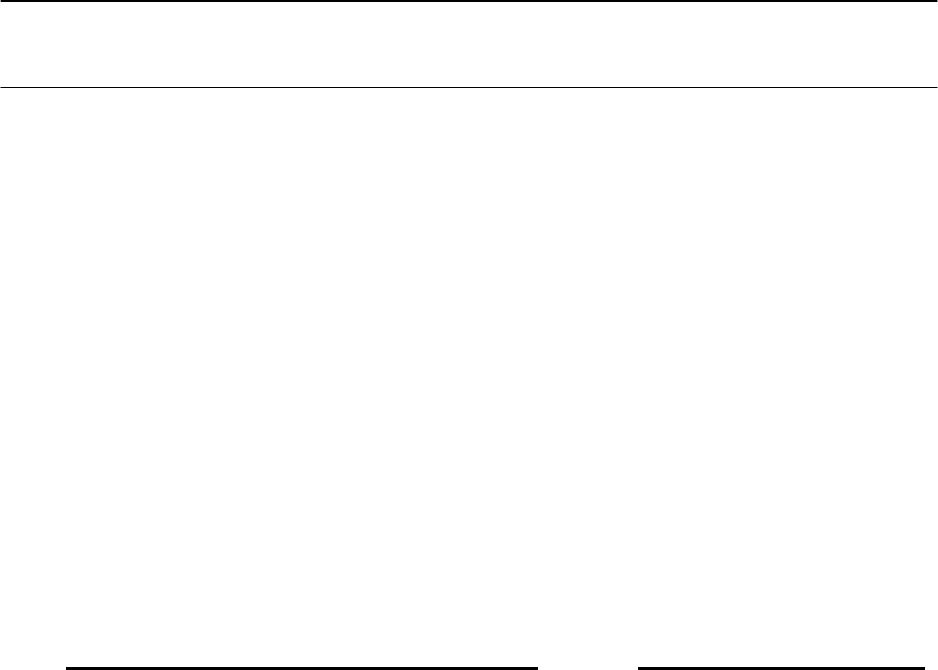
GAO-01-1008G – Internal Control Management and Evaluation Tool (8/01)Page 23
RISK ASSESSMENT
The second internal control standard addresses risk assessment. A precondition to risk
assessment is the establishment of clear, consistent agency goals and objectives at both the entity
level and at the activity (program or mission) level. Once the objectives have been set, the
agency needs to identify the risks that could impede the efficient and effective achievement of
those objectives at the entity level and the activity level. Internal control should provide for an
assessment of the risks the agency faces from both internal and external sources. Once risks
have been identified, they should be analyzed for their possible effect. Management then has to
formulate an approach for risk management and decide upon the internal control activities
required to mitigate those risks and achieve the internal control objectives of efficient and
effective operations, reliable financial reporting, and compliance with laws and regulations. A
manager or evaluator will focus on management's processes for objective setting, risk
identification, risk analysis, and management of risk during times of change. Listed below are
factors a user might consider. The list is a beginning point. It is not all-inclusive nor will every
item apply to every agency or activity within the agency. Even though some of the functions and
points may be subjective in nature and require the use of judgment, they are important in
performing risk assessment.
Establishment of Entitywide Objectives Comments/Descriptions
1. The agency has established entitywide objectives that
provide sufficiently broad statements and guidance
about what the agency is supposed to achieve, yet are
specific enough to relate directly to the agency.
Consider the following:
• Management has established overall entitywide
objectives in the form of mission, goals, and
objectives, such as those defined in strategic and
annual performance plans developed under the
GPRA.
• The entitywide objectives relate to and stem from
program requirements established by legislation.
• The entitywide objectives are specific enough to
clearly apply to the agency instead of applying to all
agencies.
2. Entitywide objectives are clearly communicated to all
employees, and management obtains feedback
signifying that the communication has been effective.

GAO-01-1008G – Internal Control Management and Evaluation Tool (8/01)Page 24
Establishment of Entitywide Objectives Comments/Descriptions
3. There is a relationship and consistency between the
agency’s operational strategies and the entitywide
objectives. Consider the following:
• Strategic plans support the entitywide objectives.
• Strategic plans address resource allocations and
priorities.
• Strategic plans and budgets are designed with an
appropriate level of detail for various management
levels.
• Assumptions made in strategic plans and budgets are
consistent with the agency’s historical experience and
current circumstances.
4. The agency has an integrated management strategy
and risk assessment plan that considers the entitywide
objectives and relevant sources of risk from internal
management factors and external sources and
establishes a control structure to address those risks.
Establishment of Activity-Level Objectives Comments/Descriptions
1. Activity-level (program or mission-level) objectives
flow from and are linked with the agency’s entitywide
objectives and strategic plans. Consider the following:
• All significant activities are adequately linked to the
entitywide objectives and strategic plans.
• Activity-level objectives are reviewed periodically to
assure that they have continued relevance.
2. Activity-level objectives are complementary, reinforce
each other, and are not contradictory.
3. The activity-level objectives are relevant to all
significant agency processes. Consider the following:
• Objectives have been established for all the key
operational activities and the support activities.

GAO-01-1008G – Internal Control Management and Evaluation Tool (8/01)Page 25
Establishment of Activity-Level Objectives Comments/Descriptions
• Activity-level objectives are consistent with effective
past practices and performance, and are consistent
with any industry or business norms that may be
applicable to the agency’s operations.
4. Activity-level objectives include measurement criteria.
5. Agency resources are adequate relative to the activity-
level objectives. Consider the following:
• The resources needed to meet the objectives have
been identified.
• If adequate resources are not available, management
has plans to acquire them.
6. Management has identified those activity-level
objectives that are critical to the success of the overall
entitywide objectives. Consider the following:
• Management has identified the things that must occur
or happen if the entitywide objectives are to be met.
• The critical activity-level objectives receive particular
attention and review from management and their
performance is monitored regularly.
7. All levels of management are involved in establishing
the activity-level objectives and are committed to their
achievement.
Risk Identification Comments/Descriptions
1. Management comprehensively identifies risk using
various methodologies as appropriate. Consider the
following:
• Qualitative and quantitative methods are used to
identify risk and determine relative risk rankings on a
scheduled and periodic basis.
• How risk is to be identified, ranked, analyzed, and
mitigated is communicated to appropriate staff.

GAO-01-1008G – Internal Control Management and Evaluation Tool (8/01)Page 26
Risk Identification Comments/Descriptions
• Risk identification and discussion occur in senior-
level management conferences.
• Risk identification takes place as a part of short-term
and long-term forecasting and strategic planning.
• Risk identification occurs as a result of consideration
of findings from audits, evaluations, and other
assessments.
• Risks that are identified at the employee and mid-
management level are brought to the attention of
senior-level managers.
2. Adequate mechanisms exist to identify risks to the
agency arising from external factors. Consider the
following:
• The agency considers the risks associated with
technological advancements and developments.
• Consideration is given to risks arising from the
changing needs or expectations of Congress, agency
officials, and the public.
• Risks posed by new legislation or regulations are
identified.
• Risks to the agency as a result of possible natural
catastrophes or criminal or terrorist actions are taken
into account.
• Identification of risks resulting from business,
political, and economic changes are determined.
• Consideration is given to the risks associated with
major suppliers and contractors.
• The agency carefully considers any risks resulting
from its interactions with various other federal
entities and parties outside the government.

GAO-01-1008G – Internal Control Management and Evaluation Tool (8/01)Page 27
Risk Identification Comments/Descriptions
3. Adequate mechanisms exist to identify risks to the
agency arising from internal factors. Consider the
following:
• Risks resulting from downsizing of agency operations
and personnel are considered.
• The agency identifies risks associated with business
process reengineering or redesign of operating
processes.
• Consideration is given to risks posed by disruption of
information systems processing and the extent to
which backup systems are available and can be
implemented.
• The agency identifies any potential risks due to highly
decentralized program operations.
• Consideration is given to possible risks resulting from
the lack of qualifications of personnel hired or the
extent to which they have been trained or not trained.
• Risks resulting from heavy reliance on contractors or
other related parties to perform critical agency
operations are identified.
• The agency identifies any risks that might be
associated with major changes in managerial
responsibilities.
• Risks resulting from unusual employee access to
vulnerable assets are considered.
• Risk identification activities consider certain human
capital-related risks, such as the inability to provide
succession planning and retain key personnel who can
affect the ability of the agency or program activity to
function effectively, and the inadequacy of
compensation and benefit programs to keep the
agency competitive with the private sector for labor.

GAO-01-1008G – Internal Control Management and Evaluation Tool (8/01)Page 28
Risk Identification Comments/Descriptions
• Risks related to the availability of future funding for
new programs or the continuation of current programs
are assessed.
4. In identifying risk, management assesses other factors
that may contribute to or increase the risk to which the
agency is exposed. Consider the following:
• Management considers any risks related to past
failures to meet agency missions, goals, or objectives
or failures to meet budget limitations.
• Consideration is given to risks indicated by a history
of improper program expenditures, violations of
funds control, or other statutory noncompliance.
• The agency identifies any risks inherent to the nature
of its mission or to the significance and complexity of
any specific programs or activities it undertakes.
5. Management identifies risks both entitywide and for
each significant activity-level of the agency.
Risk Analysis Comments/Descriptions
1. After the risks to the agency have been identified,
management undertakes a thorough and complete
analysis of their possible effect. Consider the
following:
• Management has established a formal process to
analyze risks, and that process may include informal
analysis based on day-to-day management activities.
• Criteria have been established for determining low,
medium, and high risks.
• Appropriate levels of management and employees are
involved in the risk analysis.
• The risks identified and analyzed are relevant to the
corresponding activity objective.

GAO-01-1008G – Internal Control Management and Evaluation Tool (8/01)Page 29
Risk Analysis Comments/Descriptions
• Risk analysis includes estimating the risk’s
significance.
• Risk analysis includes estimating the likelihood and
frequency of occurrence of each risk and determining
whether it falls into the low, medium, or high-risk
category.
• A determination is made on how best to manage or
mitigate the risk and what specific actions should be
taken.
2. Management has developed an approach for risk
management and control based on how much risk can
be prudently accepted. Consider the following:
• The approach can vary from one agency to another
depending upon variances in risks and how much risk
can be tolerated, but seems appropriate to the agency.
• The approach is designed to keep risks within levels
judged to be appropriate and management takes
responsibility for setting the tolerable risk level.
• Specific control activities are decided upon to manage
or mitigate specific risks entitywide and at each
activity level, and their implementation is monitored.
Managing Risk During Change Comments/Descriptions
1. The agency has mechanisms in place to anticipate,
identify, and react to risks presented by changes in
governmental, economic, industry, regulatory,
operating, or other conditions that can affect the
achievement of entitywide or activity-level goals and
objectives. Consider the following:
• All activities within the agency that might be
significantly affected by changes are considered in
the process.
• Routine changes are addressed through the
established risk identification and analysis processes.

GAO-01-1008G – Internal Control Management and Evaluation Tool (8/01)Page 30
Managing Risk During Change Comments/Descriptions
• Risks resulting from conditions that are significantly
changing are addressed at sufficiently high levels
within the agency so that their full impact on the
organization is considered and appropriate actions are
taken.
2. The agency gives special attention to risks presented by
changes that can have a more dramatic and pervasive
effect on the entity and may demand the attention of
senior officials. Consider the following:
• The agency is especially attentive to risks caused by
the hiring of new personnel to occupy key positions
or by high personnel turnover in any particular area.
• Mechanisms exist to assess the risks posed by the
introduction of new or changed information systems
and risks involved in training employees to use the
new systems and to accept the changes.
• Management gives special consideration to the risks
presented by rapid growth and expansion or rapid
downsizing and the effects on systems capabilities
and revised strategic plans, goals, and objectives.
• Consideration is given to the risks involved when
introducing major new technological developments
and applications and incorporating them into the
operating processes.
• The risks are extensively analyzed whenever the
agency begins the production or provision of new
outputs or services.
• Risks resulting from the establishment of operations
in a new geographical area are assessed.

GAO-01-1008G – Internal Control Management and Evaluation Tool (8/01)Page 31
Risk Assessment Summary Section
Provide General Conclusions and Actions Needed Here:
GAO-01-1008G – Internal Control Management and Evaluation Tool (8/01)Page 32
(BLANK)

GAO-01-1008G – Internal Control Management and Evaluation Tool (8/01)Page 33
CONTROL ACTIVITIES
The third internal control standard addresses control activities. Internal control activities are the
policies, procedures, techniques, and mechanisms that help ensure that management’s directives
to mitigate risks identified during the risk assessment process are carried out. Control activities
are an integral part of the agency’s planning, implementing, and reviewing. They are essential
for proper stewardship and accountability for government resources and for achieving effective
and efficient program results.
Control activities occur at all levels and functions of the agency. They include a wide range of
diverse activities, such as approvals, authorizations, verifications, reconciliations, performance
reviews, security activities, and the production of records and documentation. A manager or
evaluator should focus on control activities in the context of the agency’s management directives
to address risks associated with established objectives for each significant activity (program or
mission). Therefore, a manager or evaluator will consider whether control activities relate to the
risk-assessment process and whether they are appropriate to ensure that management's directives
are carried out. In assessing the adequacy of internal control activities, a reviewer should
consider whether the proper control activities have been established, whether they are sufficient
in number, and the degree to which those activities are operating effectively. This should be done
for each significant activity. This analysis and evaluation should also include controls over
computerized information systems. A manager or evaluator should consider not only whether
established control activities are relevant to the risk-assessment process, but also whether they
are being applied properly.
The control activities put into place in a given agency may vary considerably from those used in
a different agency. This difference may occur because of the (1) variations in missions, goals,
and objectives of the agencies; (2) differences in their environment and manner in which they
operate; (3) variations in degree of organizational complexity; (4) differences in agency histories
and culture; and (5) differences in the risks that the agencies face and are trying to mitigate. It is
probable that, even if two agencies did have the same missions, goals, objectives, and
organizational structures, they would employ different control activities. This is due to
individual judgment, implementation, and management. All of these factors affect an agency’s
internal control activities, which should be designed accordingly to contribute to the achievement
of the agency’s missions, goals, and objectives.
Given the wide variety of control activities that agencies may employ, it would be impossible for
this tool to address them all. However, there are some general, overall points to be considered by
managers and evaluators, as well as several major categories or types of control activity factors
that are applicable at various levels throughout practically all federal agencies. In addition, there
are some control activity factors specifically designed for information systems. These factors
and related points and subsidiary points are listed below as examples of issues to be considered.
They are meant to illustrate the range and variety of control activities that are typically used.
The list is a beginning point. It is not all-inclusive, and not every point or subsidiary point may
apply to every agency or activity within the agency. Even though some of the functions and
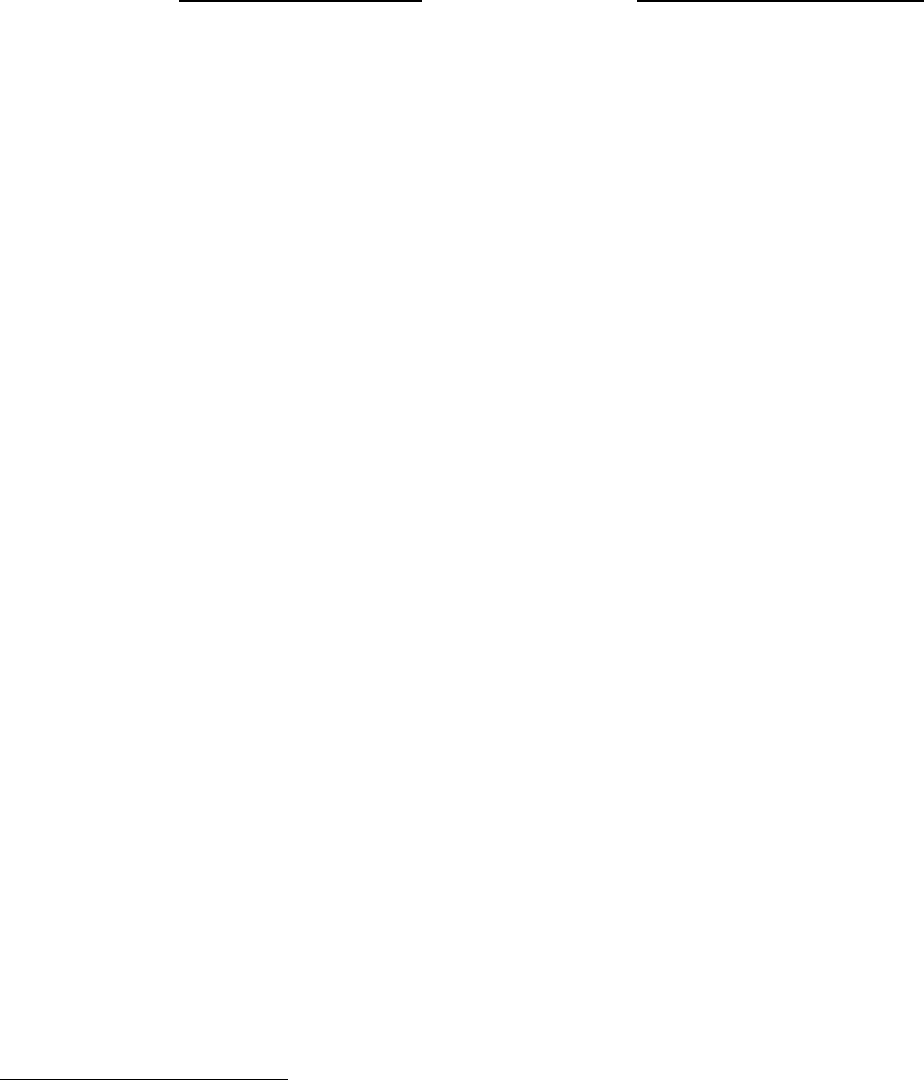
GAO-01-1008G – Internal Control Management and Evaluation Tool (8/01)Page 34
points may be subjective in nature and require the use of judgment, they are important in
assessing the appropriateness of the agency’s internal control activities.
General Application Comments/Descriptions
1. Appropriate policies, procedures, techniques, and
mechanisms exist with respect to each of the agency’s
activities. Consider the following:
• All relevant objectives and associated risks for each
significant activity have been identified in
conjunction with conducting the risk assessment and
analysis function.
• Management has identified the actions and control
activities needed to address the risks and directed
their implementation.
2. The control activities identified as necessary are in
place and being applied. Consider the following:
• Control activities described in policy and procedures
manuals are actually applied and applied properly.
• Supervisors and employees understand the purpose of
internal control activities.
• Supervisory personnel review the functioning of
established control activities and remain alert for
instances in which excessive control activities should
be streamlined.
• Timely action is take on exceptions, implementation
problems, or information that requires follow-up.
3. Control activities are regularly evaluated to ensure
that they are still appropriate and working as
intended.
5
5
This point is closely related to the functions, points, and subsidiary points included in the “Monitoring”
section. See that section for more specific information on monitoring and periodic evaluation of control
activities.

GAO-01-1008G – Internal Control Management and Evaluation Tool (8/01)Page 35
Common Categories of Control Activities Comments/Descriptions
1. Top-Level Reviews – Management tracks major
agency achievements in relation to its plans. Consider
the following:
• Top-level management regularly reviews actual
performance against budgets, forecasts, and prior
period results.
• Top management is involved in developing 5-year
and annual performance plans and targets in
accordance with GPRA and measuring and reporting
results against those plans and targets.
• Major agency initiatives are tracked for target
achievement and follow-up actions are taken.
2. Management Reviews at the Functional or Activity
Level – Agency managers review actual performance
against targets. Consider the following:
• Managers at all activity levels review performance
reports, analyze trends, and measure results against
targets.
• Both financial and program managers review and
compare financial, budgetary, and operational
performance to planned or expected results.
• Appropriate control activities are employed, such as
reconciliations of summary information to supporting
detail and checking the accuracy of summarizations
of operations.
3. Management of Human Capital – The agency
effectively manages the organization’s workforce to
achieve results. Consider the following:
6
• A clear and coherent shared vision of agency mission,
goals, values, and strategies is explicitly identified in
the strategic plan, annual performance plan, and other
guiding documents, and that view has been clearly
and consistently communicated to all employees.
6
For more detailed information about items to consider, see GAO publication
Human Capital: A Self-
Assessment Checklist for Agency Leaders
(GAO/OGC-00-14G, September 2000, Version 1).

GAO-01-1008G – Internal Control Management and Evaluation Tool (8/01)Page 36
Common Categories of Control Activities Comments/Descriptions
• The agency has a coherent overall human capital
strategy, as evidenced in its strategic plan,
performance plan, or separate human capital planning
document; and that strategy encompasses human
capital policies, programs, and practices to guide the
agency.
• The agency has a specific and explicit workforce
planning strategy, linked to the overall strategic plan,
and that allows for identification of current and future
human capital needs.
• The agency has defined the type of leaders it wants
through written descriptions of roles, responsibilities,
attributes, and competencies and has established
broad performance expectations for them.
• Senior leaders and managers attempt to build
teamwork, reinforce the shared vision of the agency,
and encourage feedback from employees, as
evidenced by actions taken to communicate this to all
employees and the existence of opportunities for
management to obtain feedback.
• The agency’s performance management system is
given a high priority by top-level officials, and it is
designed to guide the workforce to achieve the
agency’s shared vision/mission.
• Procedures are in place to ensure that personnel with
appropriate competencies are recruited and retained
for the work of the agency, including a formal
recruiting and hiring plan with explicit links to skill
needs the agency has identified.
• Employees are provided orientation, training, and
tools to perform their duties and responsibilities,
improve performance, enhance their capabilities, and
meet the demands of changing organizational needs.
• The compensation system is adequate to acquire,
motivate, and retain personnel, and incentives and
rewards are provided to encourage personnel to
perform at maximum capability.

GAO-01-1008G – Internal Control Management and Evaluation Tool (8/01)Page 37
Common Categories of Control Activities Comments/Descriptions
• The agency provides workplace flexibilities, services,
and facilities (e.g., career counseling, flextime,
casual-dress days, and childcare) to help it compete
for talent and enhance employee satisfaction and
commitment.
• Qualified and continuous supervision is provided to
ensure that internal control objectives are being met.
• Meaningful, honest, constructive performance
evaluation and feedback are provided to help
employees understand the connection between their
performance and the achievement of the agency’s
goals.
• Management conducts succession planning to ensure
continuity of needed skills and abilities.
4. Information Processing – The agency employs a
variety of control activities suited to information
processing systems to ensure accuracy and
completeness. Consider the following:
7
• Edit checks are used in controlling data entry.
• Accounting for transactions is performed in numerical
sequences.
• File totals are compared with control accounts.
• Exceptions or violations indicated by other control
activities are examined and acted upon.
• Access to data, files, and programs is appropriately
controlled.
5. Physical Control Over Vulnerable Assets – The agency
employs physical control to secure and safeguard
vulnerable assets. Consider the following:
7
Further guidance on control activities for information processing is provided in the following section
under “Control Activities Specific for Information Systems.” In addition, see GAO’s FISCAM and OMB
Circular A-130,
Management of Federal Information Resources
.

GAO-01-1008G – Internal Control Management and Evaluation Tool (8/01)Page 38
Common Categories of Control Activities Comments/Descriptions
• Physical safeguarding policies and procedures have
been developed, implemented, and communicated to
all employees.
• The agency has developed a disaster recovery plan,
which is regularly updated and communicated to
employees.
• The agency has developed a plan for the identification
of and protection of any critical infrastructure assets.
8
• Assets that are particularly vulnerable to loss, theft,
damage, or unauthorized use, such as cash, securities,
supplies, inventories, and equipment, are physically
secured and access to them controlled.
• Assets such as cash, securities, supplies, inventories,
and equipment are periodically counted and
compared to control records and exceptions
examined.
• Cash and negotiable securities are maintained under
lock and key and access to them strictly controlled.
• Forms such as blank checks and purchase orders are
sequentially pre-numbered and physically secured
and access to them strictly controlled.
• Mechanical check signers and signature plates are
physically protected and access to them strictly
controlled.
• Equipment vulnerable to theft is securely fastened or
protected in some other manner.
• Identification plates and numbers are affixed to office
furniture and fixtures, equipment, and other portable
assets.
8
Critical infrastructure assets are those assets of physical and cyber-based systems that are essential to the
minimum operations of the economy and government. In accordance with Presidential Decision Directive
No. 63, dated May 22, 1998, each federal agency is responsible for identifying its own critical infrastructure
and developing a protection plan for it.

GAO-01-1008G – Internal Control Management and Evaluation Tool (8/01)Page 39
Common Categories of Control Activities Comments/Descriptions
• Inventories, supplies, and finished items/goods are
stored in physically secured areas and protected from
damage.
• Facilities are protected from fire by fire alarms and
sprinkler systems.
• Access to premises and facilities is controlled by
fences, guards, and/or other physical controls.
• Access to facilities is restricted and controlled during
nonworking hours.
6. Performance Measures and Indicators – The agency
has established and monitors performance measures
and indicators. Consider the following:
• Performance measures and indicators have been
established throughout the organization at the
entitywide, activity, and individual level.
• The agency periodically reviews and validates the
propriety and integrity of both organizational and
individual performance measures and indicators.
• Performance measurement assessment factors are
evaluated to ensure they are linked to mission, goals,
and objectives, and are balanced and set appropriate
incentives for achieving goals while complying with
law, regulations, and ethical standards.
• Actual performance data are continually compared
against expected/planned goals and differences are
analyzed.
• Comparisons are made relating different sets of data
to one another so that analyses of the relationships
can be made and corrective actions can be taken if
necessary.
• Investigation of unexpected results or unusual trends
leads to identification of circumstances in which the
achievement of goals and objectives may be
threatened and corrective action is taken.

GAO-01-1008G – Internal Control Management and Evaluation Tool (8/01)Page 40
Common Categories of Control Activities Comments/Descriptions
• Analysis and review of performance measures and
indicators are used for both operational and financial
reporting control purposes.
7. Segregation of Duties – Key duties and responsibilities
are divided or segregated among different people to
reduce the risk of error, waste, or fraud. Consider the
following:
• No one individual is allowed to control all key
aspects of a transaction or event.
• Responsibilities and duties involving transactions and
events are separated among different employees with
respect to authorization, approval, processing and
recording, making payments or receiving funds,
review and auditing, and the custodial functions and
handling of related assets.
• Duties are assigned systematically to a number of
individuals to ensure that effective checks and
balances exist.
• Where feasible, no one individual is allowed to work
alone with cash, negotiable securities, or other highly
venerable assets.
• The responsibility for opening mail is assigned to
individuals who have no responsibilities for or access
to files or documents pertaining to accounts
receivable or cash accounts.
• Bank accounts are reconciled by employees who have
no responsibilities for cash receipts, disbursements, or
custody.
• Management is aware that collusion can reduce or
destroy the control effectiveness of segregation of
duties and, therefore, is especially alert for it and
attempts to reduce the opportunities for it to occur.

GAO-01-1008G – Internal Control Management and Evaluation Tool (8/01)Page 41
Common Categories of Control Activities Comments/Descriptions
8. Execution of Transactions and Events – Transactions
and other significant events are authorized and
performed by the appropriate personnel. Consider the
following:
• Controls ensure that only valid transactions and other
events are initiated or entered into, in accordance with
management’s decisions and directives.
• Controls are established to ensure that all transactions
and other significant events that are entered into are
authorized and executed only by employees acting
within the scope of their authority.
• Authorizations are clearly communicated to managers
and employees and include the specific conditions
and terms under which authorizations are to be made.
• The terms of authorizations are in accordance with
directives and within limitations established by law,
regulation, and management.
9. Recording of Transactions and Events – Transactions
and other significant events are properly classified and
promptly recorded. Consider the following:
• Transactions and events are appropriately classified
and promptly recorded so that they maintain their
relevance, value, and usefulness to management in
controlling operations and making decisions.
• Proper classification and recording take place
throughout the entire life cycle of each transaction or
event, including authorization, initiation, processing,
and final classification in summary records.
• Proper classification of transactions and events
includes appropriate organization and format of
information on original documents (hardcopy paper
or electronic) and summary records from which
reports and statements are prepared.

GAO-01-1008G – Internal Control Management and Evaluation Tool (8/01)Page 42
Common Categories of Control Activities Comments/Descriptions
• Excessive adjustments to numbers or account
classifications are not necessary prior to finalization
of financial reports.
10. Access Restrictions to and Accountability for
Resources and Records – Access to resources and
records is limited and accountability for their custody
is assigned. Consider the following:
• The risk of unauthorized use or loss is controlled by
restricting access to resources and records only to
authorized personnel.
• Accountability for resources and records custody and
use is assigned to specific individuals.
• Access restrictions and accountability assignments for
custody are periodically reviewed and maintained.
• Periodic comparison of resources with the recorded
accountability is made to determine if the two agree,
and differences are examined.
• How frequently actual resources are compared to
records and the degree of access restrictions are
functions of the vulnerability of the resource to the
risk of errors, fraud, waste, misuse, theft, or
unauthorized alteration.
• Management considers such factors as asset value,
portability, and exchangeability when determining the
appropriate degree of access restrictions.
• As a part of assigning and maintaining accountability
for resources and records, management informs and
communicates those responsibilities to specific
individuals within the agency and assures that those
people are aware of their duties for appropriate
custody and use of those resources.
11. Documentation – Internal Control and all transactions
and other significant events are clearly documented.
Consider the following:

GAO-01-1008G – Internal Control Management and Evaluation Tool (8/01)Page 43
Common Categories of Control Activities Comments/Descriptions
• Written documentation exists covering the agency’s
internal control structure and for all significant
transactions and events.
• The documentation is readily available for
examination.
• The documentation for internal control includes
identification of the agency’s activity-level functions
and related objectives and control activities and
appears in management directives, administrative
policies, accounting manuals, and other such
manuals.
• Documentation for internal control includes
documentation describing and covering automated
information systems, data collection and handling,
and the specifics of general and application control
related to such systems.
9
• Documentation of transactions and other significant
events is complete and accurate and facilitates tracing
the transaction or event and related information from
authorization and initiation, through its processing, to
after it is completed.
• Documentation, whether in paper or electronic form,
is useful to managers in controlling their operations
and to any others involved in evaluating or analyzing
operations.
• All documentation and records are properly managed,
maintained, and periodically updated.
9
Additional guidance on documentation of control activities for information processing is provided in the
following section under “Control Activities Specific for Information Systems.” In addition, see GAO’s
FISCAM and OMB Circular A-130,
Management of Federal Information Resources
.

GAO-01-1008G – Internal Control Management and Evaluation Tool (8/01)Page 44
Control Activities Specific for Information Systems – General Control
As stated in the introduction to the Control Activities Section, there are some control activity
factors specifically designed for information systems. As discussed in the standard, there are two
broad groupings of information systems control – general control and application control.
General control includes the structure, policies, and procedures that apply to the agency’s overall
computer operations. It applies to all information systems – mainframe, minicomputer, network,
and end-user environments. General control creates the environment in which the agency’s
application systems operate. General control activities are presented first followed by
application control activities.
There are six major factors or categories of control activities that need to be considered by the
user when evaluating general control: entitywide security management program, access control,
application software development and change, system software control, segregation of duties,
and service continuity. The factors and related points and some subsidiary points are listed
below as examples of issues to be considered. They are meant to illustrate the range and variety
of general control activities that are typically used. They are not all-inclusive. Users should
refer to the list of critical elements and control activities pertaining to general control provided in
GAO’s Federal Information System Controls Audit Manual (FISCAM) (GAO/AIMD-12.19.6,
January 1999). The list below summarizes the FISCAM’s list; however, users should refer to the
FISCAM for more detailed guidance in performing their evaluation and analysis.
Entitywide Security Management Program Comments/Descriptions
1. The agency periodically performs a comprehensive,
high-level assessment of risks to its information
systems. Consider the following:
• Risk assessments are performed and documented
regularly and whenever systems, facilities, or other
conditions change.
• Risk assessments consider data sensitivity and
integrity.
• Final risk determinations and managerial approvals
are documented and kept on file.
2. The agency has developed a plan that clearly describes
the entitywide security program and policies and
procedures that support it.

GAO-01-1008G – Internal Control Management and Evaluation Tool (8/01)Page 45
Entitywide Security Management Program Comments/Descriptions
3. Senior management has established a structure to
implement and manage the security program
throughout the agency, and security responsibilities
are clearly defined.
4. The agency has implemented effective security-related
personnel policies.
5. The agency monitors the security program’s
effectiveness and makes changes as needed. Consider
the following:
• Management periodically assesses the
appropriateness of security policies and compliance
with them.
• Corrective actions are promptly and effectively
implemented and tested, and they are continually
monitored.
Access Control Comments/Descriptions
1. The agency classifies information resources according
to their criticality and sensitivity. Consider the
following:
• Resource classifications and related criteria have been
established and communicated to resource owners.
• Resource owners have classified their information
resources based on the approved criteria and with
regard to risk determinations and assessments and
have documented those classifications.
2. Resource owners have identified authorized users, and
their access to the information has been formally
authorized.
3. The agency has established physical and logical
controls to prevent or detect unauthorized access.
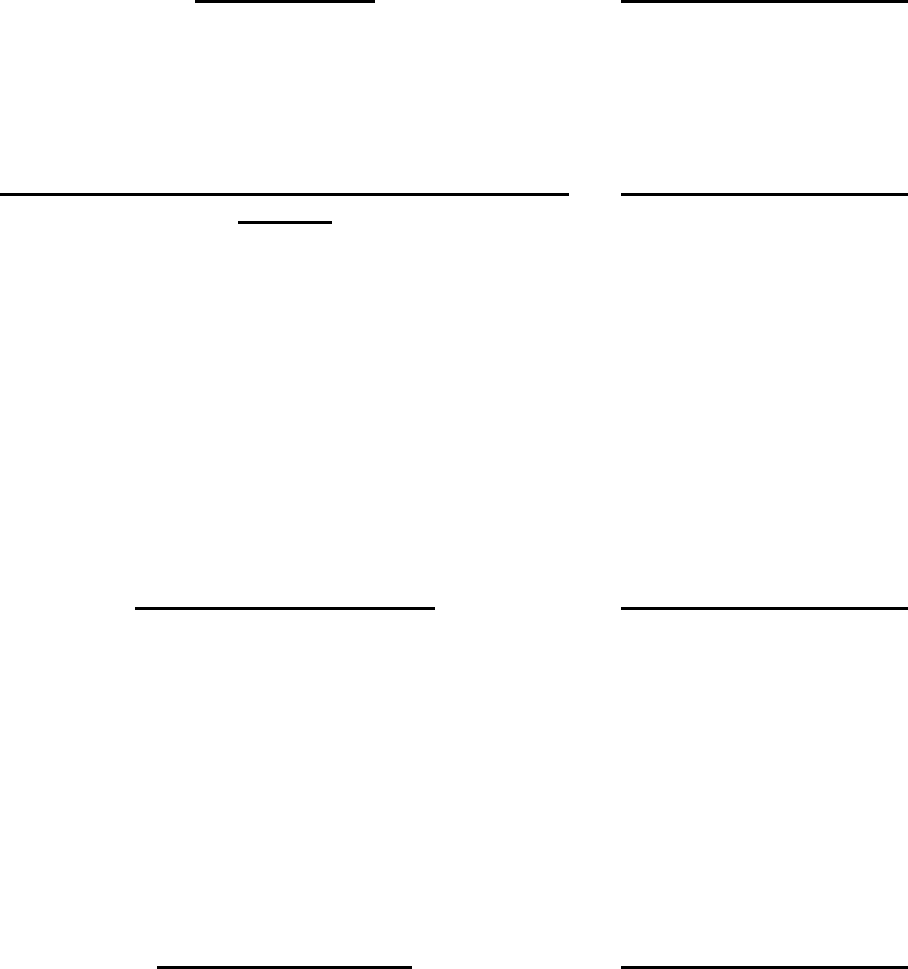
GAO-01-1008G – Internal Control Management and Evaluation Tool (8/01)Page 46
Access Control Comments/Descriptions
4. The agency monitors information systems access,
investigates apparent violations, and takes appropriate
remedial and disciplinary action.
Application Software Development and Change
Control
Comments/Descriptions
1. Information system processing features and program
modifications are properly authorized.
2. All new or revised software is thoroughly tested and
approved.
3. The agency has established procedures to ensure
control of its software libraries, including labeling,
access restrictions, and use of inventories and separate
libraries.
System Software Control Comments/Descriptions
1. The agency limits access to system software based on
job responsibilities, and access authorization is
documented.
2. Access to and use of system software are controlled
and monitored.
3. The agency controls changes made to the system
software.
Segregation of Duties Comments/Descriptions
1. Incompatible duties have been identified and policies
implemented to segregate those duties.
2. Access controls have been established to enforce
segregation of duties.
3. The agency exercises control over personnel activities
through the use of formal operating procedures,
supervision, and review.

GAO-01-1008G – Internal Control Management and Evaluation Tool (8/01)Page 47
Service Continuity Comments/Descriptions
1. The criticality and sensitivity of computerized
operations have been assessed and prioritized, and
supporting resources have been identified.
2. The agency has taken steps to prevent and minimize
potential damage and interruption through the use of
data and program backup procedures including off-
site storage of backup data as well as environmental
controls, staff training, and hardware maintenance
and management.
3. Management has developed and documented a
comprehensive contingency plan.
4. The agency periodically tests the contingency plan and
adjusts it as appropriate.
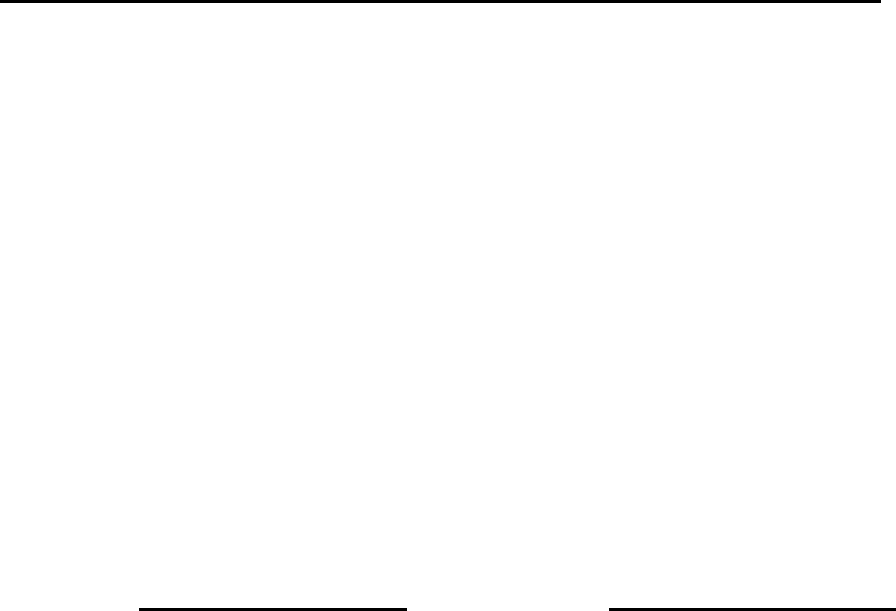
GAO-01-1008G – Internal Control Management and Evaluation Tool (8/01)Page 48
Control Activities Specific for Information Systems – Application Control
Application control covers the structure, policies, and procedures designed to help ensure
completeness, accuracy, authorization, and validity of all transactions during application
processing. It includes both the routines contained within the computer program code as well as
the policies and procedures associated with user activities, such as manual measures performed
by the user to determine that the data were processed accurately by the computer.
There are four major factors or categories of control activities that need to be considered by the
user when evaluating application control: authorization control, completeness control, accuracy
control, and control over integrity of processing and data files. The factors and related points
and some subsidiary points are listed below as examples of issues to be considered. They are
meant to illustrate the range and variety of application control activities that are typically used.
They are not all-inclusive. In the future, application control evaluation and testing will be
addressed in Chapter 4 of GAO’s Federal Information System Controls Audit Manual (FISCAM)
(GAO/AIMD-12.19.6, January 1999). That chapter is currently under development and is
expected to be issued with the first update of the FISCAM. However, the list of factors, points,
and subsidiary points provided below generally follows the guidance expected to be issued in the
FISCAM. Users should refer to Chapter 4 of the FISCAM, when issued, for more detailed
guidance in performing their evaluation and analysis.
Authorization Control Comments/Descriptions
1. Source documents are controlled and require
authorization. Consider the following:
• Access to blank source documents is restricted.
• Source documents are pre-numbered sequentially.
• Key source documents require authorizing signatures.
• For batch application systems, batch control sheets
are used providing information such as date, control
number, number of documents, and control totals for
key fields.
• Supervisory or independent review of data occurs
before it is entered into the application system.
2. Data entry terminals have restricted access.
3. Master files and exception reporting are used to ensure
that all data processed are authorized.

GAO-01-1008G – Internal Control Management and Evaluation Tool (8/01)Page 49
Completeness Control Comments/Descriptions
1. All authorized transactions are entered into and
processed by the computer.
2. Reconciliations are performed to verify data
completeness.
Accuracy Control Comments/Descriptions
1. The agency’s data entry design features contribute to
data accuracy.
2. Data validation and editing are performed to identify
erroneous data.
3. Erroneous data are captured, reported, investigated,
and promptly corrected.
4. Output reports are reviewed to help maintain data
accuracy and validity.
Control Over Integrity of
Processing and Data Files
Comments/Descriptions
1. Procedures ensure that the current version of
production programs and data files are used during
processing.
2. Programs include routines to verify that the proper
version of the computer file is used during processing.
3. Programs include routines for checking internal file
header labels before processing.
4. The application protects against concurrent file
updates.

GAO-01-1008G – Internal Control Management and Evaluation Tool (8/01)Page 50
Control Activities Summary Section
Provide General Conclusions and Actions Needed Here:
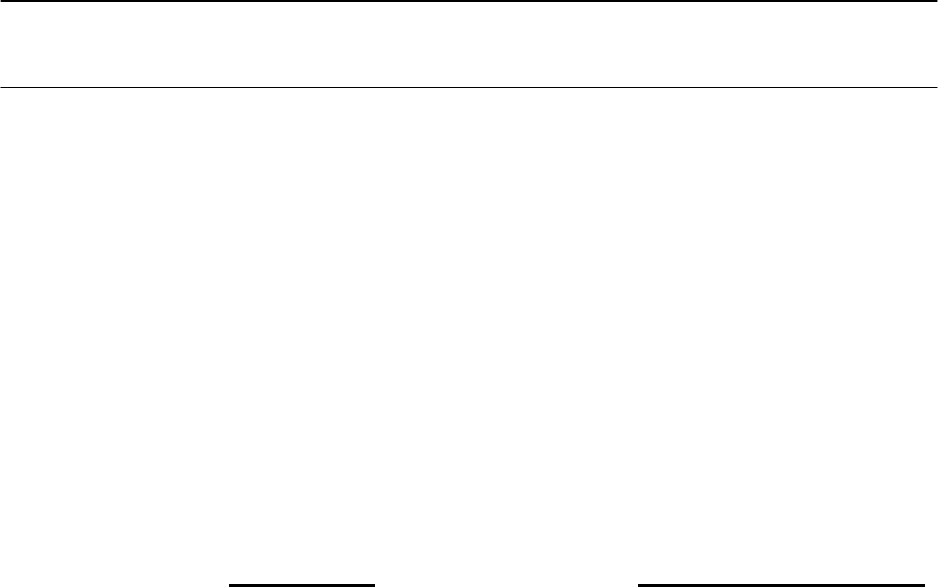
GAO-01-1008G – Internal Control Management and Evaluation Tool (8/01)Page 51
INFORMATION AND COMMUNICATIONS
According to the fourth internal control standard, for an agency to run and control its operations,
it must have relevant, reliable information, both financial and nonfinancial, relating to external as
well as internal events. That information should be recorded and communicated to management
and others within the agency who need it and in a form and within a time frame that enables
them to carry out their internal control and operational responsibilities. In addition, the agency
needs to make sure that the forms of communications are broad-based and that information
technology management assures useful, reliable, and continuous communications. Managers and
evaluators should consider the appropriateness of information and communication systems to the
entity's needs and the degree to which they accomplish the objectives of internal control. Listed
below are factors a user might consider. The list is a beginning point. It is not all-inclusive nor
will every item apply to every agency or activity within the agency. Even though some of the
functions and points may be subjective in nature and require the use of judgment, they are
important in collecting appropriate data and information and in establishing and maintaining
good communications.
Information Comments/Descriptions
1. Information from internal and external sources is
obtained and provided to management as a part of the
agency’s reporting on operational performance
relative to established objectives. Consider the
following:
• Internally generated information critical to achieving
the agency’s objectives, including information
relative to critical success factors, is identified and
regularly reported to management.
• The agency obtains and reports to managers any
relevant external information that may affect the
achievement of its missions, goals, and objectives,
particularly that related to legislative or regulatory
developments and political or economic changes.
• Internal and external information needed by managers
at all levels is reported to them.
2. Pertinent information is identified, captured, and
distributed to the right people in sufficient detail, in
the right form, and at the appropriate time to enable
them to carry out their duties and responsibilities
efficiently and effectively. Consider the following:
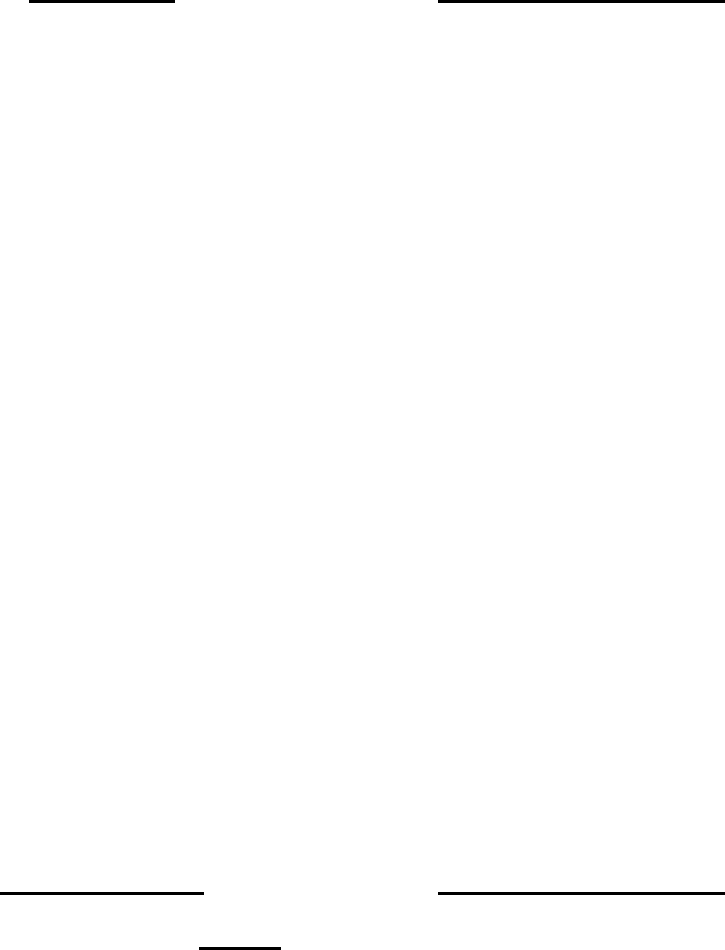
GAO-01-1008G – Internal Control Management and Evaluation Tool (8/01)Page 52
Information Comments/Descriptions
• Managers receive analytical information that helps
them identify specific actions that need to be taken.
• Information is provided at the right level of detail for
different levels of management.
• Information is summarized and presented
appropriately and provides pertinent information
while permitting a closer inspection of details as
needed.
• Information is available on a timely basis to allow
effective monitoring of events, activities, and
transactions and to allow prompt reaction.
• Program managers receive both operational and
financial information to help them determine whether
they are meeting the strategic and annual performance
plans and meeting the agency’s goals for
accountability of resources.
• Operational information is provided to managers so
that they may determine whether their programs
comply with applicable laws and regulations.
• The appropriate financial and budgetary information
is provided for both internal and external financial
reporting.
Communications Comments/Descriptions
1. Management ensures that effective internal
communications occur. Consider the following:
• Top management provides a clear message
throughout the agency that internal control
responsibilities are important and must be taken
seriously.

GAO-01-1008G – Internal Control Management and Evaluation Tool (8/01)Page 53
Communications Comments/Descriptions
• Employees’ specific duties are clearly communicated
to them and they understand the relevant aspects of
internal control, how their role fits into it, and how
their work relates to the work of others.
• Employees are informed that when the unexpected
occurs in performing their duties, attention must be
given not only to the event, but also to the underlying
cause, so that potential internal control weaknesses
can be identified and corrected before they can do
further harm to the agency.
• Acceptable behavior versus unacceptable behavior
and the consequences of improper conduct are clearly
communicated to all employees.
• Personnel have a means of communicating
information upstream within the agency through
someone other than a direct supervisor, and there is a
genuine willingness to listen on the part of
management.
• Mechanisms exist to allow the easy flow of
information down, across, and up the organization,
and easy communications exist between functional
activities, such as between procurement activities and
production activities.
• Employees indicate that informal or separate lines of
communications exist, which serve as a “fail-safe”
control for normal communications avenues.
• Personnel understand that there will be no reprisals
for reporting adverse information, improper conduct,
or circumvention of internal control activities.
• Mechanisms are in place for employees to
recommend improvements in operations, and
management acknowledges good employee
suggestions with cash awards or other meaningful
recognition.

GAO-01-1008G – Internal Control Management and Evaluation Tool (8/01)Page 54
Communications Comments/Descriptions
• Management communicates frequently with internal
oversight groups, such as senior management
councils, and keeps them informed of performance,
risks, major initiatives, and any other significant
events.
2. Management ensures that effective external
communications occur with groups that can have a
serious impact on programs, projects, operations, and
other activities, including budgeting and financing.
Consider the following:
• Open and effective communications channels have
been established with customers, suppliers,
contractors, consultants, and other groups that can
provide significant input on quality and design of
agency products and services.
• All outside parties dealing with the agency are clearly
informed of the agency’s ethical standards and also
understand that improper actions, such as improper
billings, kickbacks, or other improper payments, will
not be tolerated.
• Communications from external parties, such as other
federal agencies, state and local governments, and
other related third parties, is encouraged since it can
be a source of information on how well internal
control is functioning.
• The agency has methods to ensure compliance with
the Federal Advisory Committee Act of 1972 since
such committees may include individuals external to
the agency with whom communications could occur.
• Complaints or inquires, especially those concerning
services, such as shipments, receipts, and billings, are
welcomed since they can point out control problems.
• Management makes certain that the advice and
recommendations of Inspectors General and other
auditors and evaluators are fully considered and that
actions are implemented to correct any problems or
weaknesses they identify.

GAO-01-1008G – Internal Control Management and Evaluation Tool (8/01)Page 55
Communications Comments/Descriptions
• Communications with Congress, OMB, Treasury,
other federal agencies, state and local governments,
the media, the public, and others provide information
relevant to the requesters’ needs so that they can
better understand the agency’s mission, goals, and
objectives, better understand the risks facing the
agency, and thus better understand the agency.
Forms and Means of Communications Comments/Descriptions
1. The agency employs many and various forms and
means of communicating important information with
employees and others. Consider the following:
• Management uses effective communications methods,
which may include policy and procedures manuals,
management directives, memoranda, bulletin board
notices, internet and intranet web pages, videotaped
messages, e-mail, and speeches.
• Two of the most powerful forms of communications
used by management are the positive actions it takes
in dealing with personnel throughout the organization
and its demonstrated support of internal control.
2. The agency manages, develops, and revises its
information systems in an effort to continually
improve the usefulness and reliability of its
communication of information. Consider the
following:
• Information systems management is based on a
strategic plan for information systems that is linked to
the agency’s overall strategic plan.
• A mechanism exists for identifying emerging
information needs.
• As part of the agency’s information management,
improvements and advances in technology are
monitored, analyzed, evaluated, and introduced to
help the agency respond more rapidly and efficiently
to those it serves.

GAO-01-1008G – Internal Control Management and Evaluation Tool (8/01)Page 56
Forms and Means of Communications Comments/Descriptions
• Management continually monitors the quality of the
information captured, maintained, and communicated
as measured by such factors as appropriateness of
content, timeliness, accuracy, and accessibility.
• Management’s support for the development of
information technology is demonstrated by its
commitment of appropriate human and financial
resources to the effort.

GAO-01-1008G – Internal Control Management and Evaluation Tool (8/01)Page 57
Information and Communications Summary Section
Provide General Conclusions and Actions Needed Here:
GAO-01-1008G – Internal Control Management and Evaluation Tool (8/01)Page 58
(BLANK)
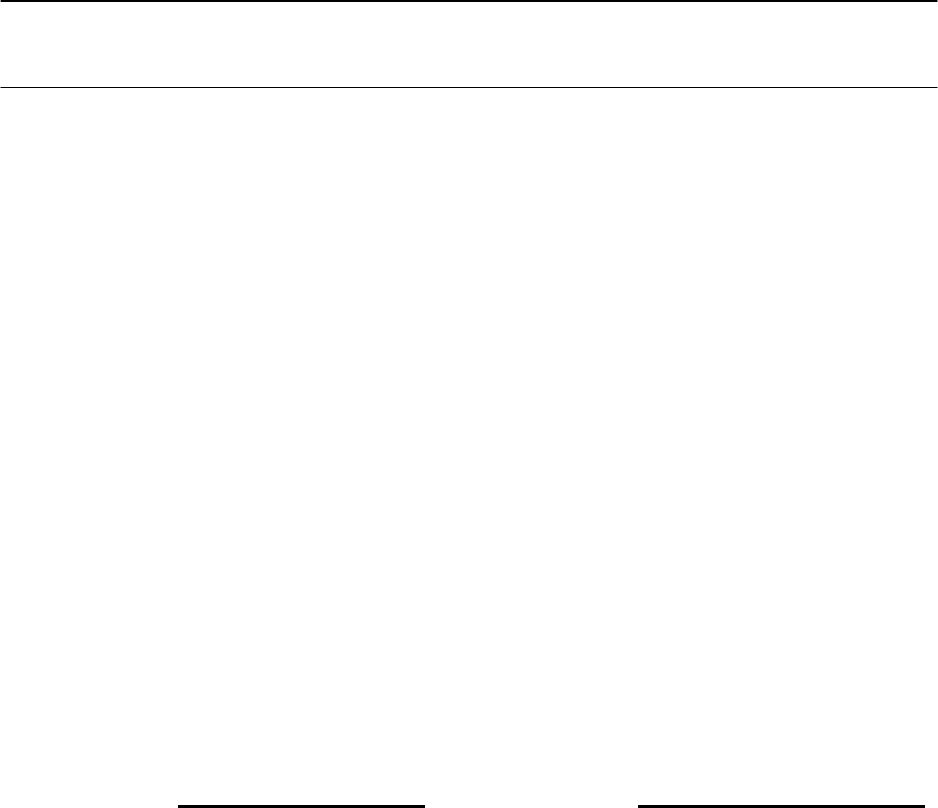
GAO-01-1008G – Internal Control Management and Evaluation Tool (8/01)Page 59
MONITORING
Monitoring is the final internal control standard. Internal control monitoring should assess the
quality of performance over time and ensure that the findings of audits and other reviews are
promptly resolved. In considering the extent to which the continued effectiveness of internal
control is monitored, both ongoing monitoring activities and separate evaluations of the internal
control system, or portions thereof, should be considered. Ongoing monitoring occurs during
normal operations and includes regular management and supervisory activities, comparisons,
reconciliations, and other actions people take in performing their duties. It includes ensuring that
managers and supervisors know their responsibilities for internal control and the need to make
control and control monitoring part of their regular operating processes. Separate evaluations are
a way to take a fresh look at internal control by focusing directly on the controls’ effectiveness at
a specific time. These evaluations may take the form of self-assessments as well as review of
control design and direct testing, and may include the use of this Management and Evaluation
Tool or some similar device. In addition, monitoring includes policies and procedures for
ensuring that any audit and review findings and recommendations are brought to the attention of
management and are resolved promptly. Managers and evaluators should consider the
appropriateness of the agency’s internal control monitoring and the degree to which it helps them
accomplish their objectives. Listed below are factors a user might consider. The list is a
beginning point. It is not all-inclusive, and every item might not apply to every agency or
activity within the agency. Even though some of the functions and points may be subjective in
nature and require the use of judgment, they are important in establishing and maintaining good
internal control monitoring policies and procedures.
Ongoing Monitoring Comments/Descriptions
1. Management has a strategy to ensure that ongoing
monitoring is effective and will trigger separate
evaluations where problems are identified or systems
are critical and testing is periodically desirable.
Consider the following:
• Management’s strategy provides for routine feedback
and monitoring of performance and control
objectives.
• The monitoring strategy includes methods to
emphasize to program and operational mangers that
they have responsibility for internal control and that
they should monitor the effectiveness of control
activities as a part of their regular duties.

GAO-01-1008G – Internal Control Management and Evaluation Tool (8/01)Page 60
Ongoing Monitoring Comments/Descriptions
• The monitoring strategy includes methods to
emphasize to program mangers their responsibility
for internal control and their duties to regularly
monitor the effectiveness of control activities.
• The monitoring strategy includes identification of
critical operational and mission support systems that
need special review and evaluation.
• The strategy includes a plan for periodic evaluation of
control activities for critical operational and mission
support systems.
2. In the process of carrying out their regular activities,
agency personnel obtain information about whether
internal control is functioning properly. Consider the
following:
• Operating reports are integrated or reconciled with
financial and budgetary reporting system data and
used to manage operations on an ongoing basis, and
management is aware of inaccuracies or exceptions
that could indicate internal control problems.
• Operating management compares production, sales,
or other operating information obtained in the course
of its daily activities to system-generated information
and follows up on any inaccuracies or other problems
that might be found.
• Operating personnel are required to “sign-off” on the
accuracy of their unit’s financial statements and are
held accountable if errors are discovered.
3. Communications from external parties should
corroborate internally generated data or indicate
problems with internal control. Consider the
following:
• Management recognizes that customers paying for
invoices help to corroborate billing data, while
customer complaints indicate that deficiencies may
exist; and these deficiencies are then investigated to
determine the underlying causes.

GAO-01-1008G – Internal Control Management and Evaluation Tool (8/01)Page 61
Ongoing Monitoring Comments/Descriptions
• Communications from vendors and monthly
statements of accounts payable are used as control
monitoring techniques.
• Supplier complaints about any unfair practices by
agency purchasing agents are investigated.
• Congress and oversight groups communicate
information to the agency about compliance or other
matters that reflect on the functioning of internal
control, and management follows up on any problems
indicated.
• Control activities that should have prevented or
detected any problems that arose, but did not function
properly, are reassessed.
4. Appropriate organizational structure and supervision
help provide oversight of internal control functions.
Consider the following:
• Automated edits and checks as well as clerical
activities are used to help control accuracy and
completeness of transaction processing.
• Separation of duties and responsibilities is used to
help deter fraud.
• The Inspector General is independent and has
authority to report directly to the agency head and
does not conduct agency operations for management.
5. Data recorded by information and financial systems
are periodically compared with physical assets and
discrepancies are examined. Consider the following:
• Inventory levels of materials, supplies, and other
assets are checked regularly; differences between
recorded and actual amounts are corrected; and the
reasons for the discrepancies resolved.
• The frequency of the comparison is a function of the
vulnerability of the asset.

GAO-01-1008G – Internal Control Management and Evaluation Tool (8/01)Page 62
Ongoing Monitoring Comments/Descriptions
• Custodial accountability for assets and resources is
assigned to responsible individuals.
6. The Inspector General and other auditors and
evaluators regularly provide recommendations for
improvements in internal control with management
taking appropriate follow-up action.
7. Meetings with employees are used to provide
management with feedback on whether internal
control is effective. Consider the following:
• Relevant issues, information, and feedback
concerning internal control raised at training
seminars, planning sessions, and other meetings are
captured and used by management to address
problems or strengthen the internal control structure.
• Employee suggestions on internal control are
considered and acted upon as appropriate.
• Management encourages employees to identify
internal control weaknesses and report them to the
next supervisory level.
8. Employees are regularly asked to state explicitly
whether they comply with the agency’s code of conduct
or similar agency pronouncements of expected
employee behavior. Consider the following:
• Personnel periodically acknowledge compliance with
the code of conduct.
• Signatures are required to evidence performance of
critical internal control functions, such as
reconciliations.
Separate Evaluations Comments/Descriptions
1. The scope and frequency of separate evaluations of
internal control are appropriate for the agency.
Consider the following:

GAO-01-1008G – Internal Control Management and Evaluation Tool (8/01)Page 63
Separate Evaluations Comments/Descriptions
• Consideration is given to the risk assessment results
and the effectiveness of ongoing monitoring when
determining the scope and frequency of separate
evaluations.
• Separate evaluations are often prompted by events
such as major changes in management plans or
strategies, major expansion or downsizing of the
agency, or significant changes in operations or
processing of financial or budgetary information.
• Appropriate portions or sections of internal control
are evaluated regularly.
• Separate evaluations are conducted by personnel with
the required skills that may include the agency’s
Inspector General or an external auditor.
2. The methodology for evaluating the agency’s internal
control is logical and appropriate. Consider the
following:
• The methodology used may include self-assessments
using checklists, questionnaires, or other such tools,
and it may include the use of this Management and
Evaluation Tool or some similar device.
• The separate evaluations may include a review of the
control design and direct testing of the internal
control activities.
• In agencies where large amounts of data are
processed by the information and/or financial
systems, separate evaluation methodology employs
computer assisted audit techniques to identify
indicators of inefficiencies, waste, or abuse.
• The evaluation team develops a plan for the
evaluation process to ensure a coordinated effort.
• If the evaluation process is conducted by agency
employees, it is managed by an executive with the
requisite authority, capability, and experience.

GAO-01-1008G – Internal Control Management and Evaluation Tool (8/01)Page 64
Separate Evaluations Comments/Descriptions
• The evaluation team gains a sufficient understanding
of the agency’s missions, goals, and objectives and its
operations and activities.
• The evaluation team gains an understanding of how
the agency’s internal control is supposed to work and
how it actually does work.
• The evaluation team analyzes the results of the
evaluation against established criteria.
• The evaluation process is properly documented.
3. If the separate evaluations are conducted by the
agency’s Inspector General, that office has sufficient
resources, ability, and independence. Consider the
following:
10
• The Inspector General has sufficient levels of
competent and experienced staff.
• The Inspector General is organizationally
independent and reports to the highest levels within
the agency.
• The responsibilities, scope of work, and audit plans of
the Inspector General are appropriate to the agency’s
needs.
4. Deficiencies found during separate evaluations are
promptly resolved. Consider the following:
• Deficiencies are promptly communicated to the
individual responsible for the function and also to at
least one level of management above that individual.
• Serious deficiencies and internal control problems are
promptly reported to top management.
10
This particular point and the related subsidiary points are not expected to be assessed by agency
management or the agency Inspector General. However, their consideration may be useful in outside
reviews or peer reviews.
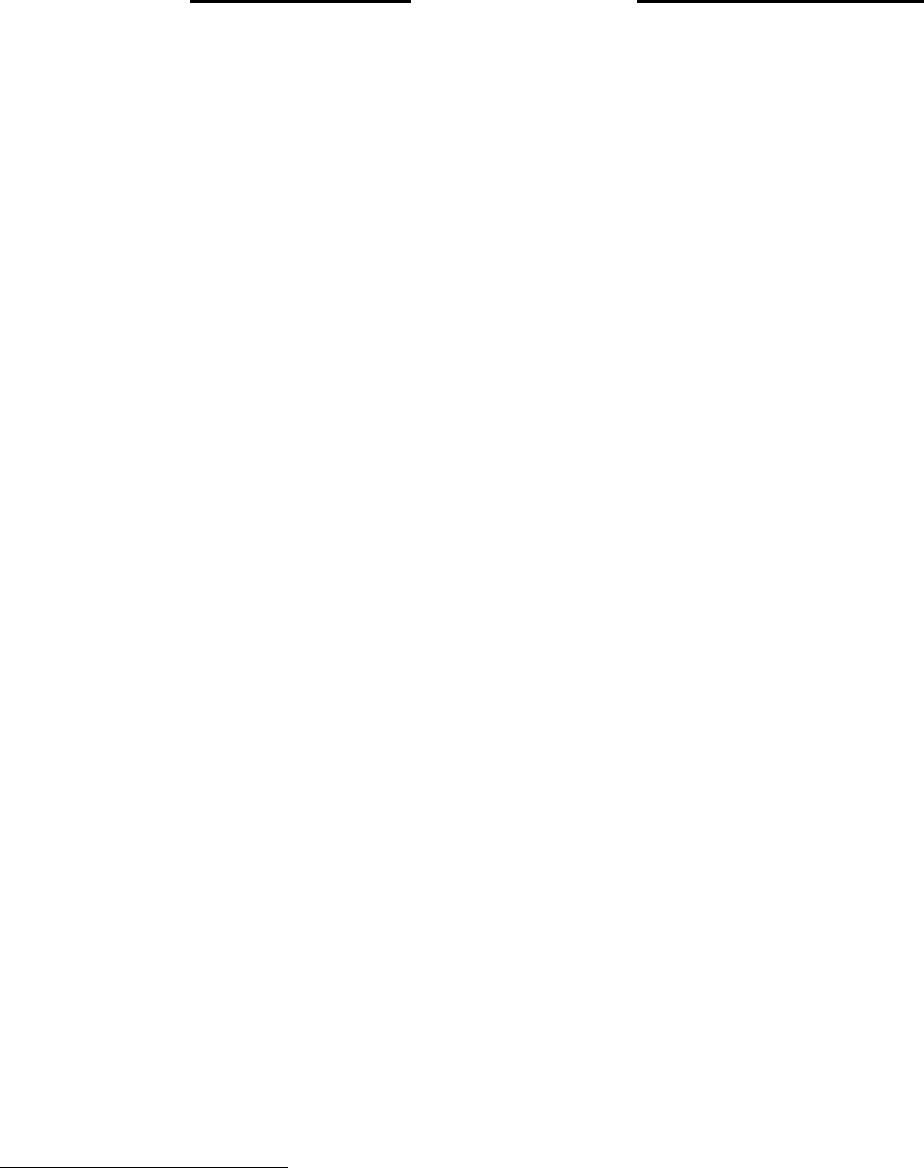
GAO-01-1008G – Internal Control Management and Evaluation Tool (8/01)Page 65
Audit Resolution
11
Comments/Descriptions
1. The agency has a mechanism to ensure the prompt
resolution of findings from audits and other reviews.
Consider the following:
• Managers promptly review and evaluate findings
resulting from audits, FMFIA and FFMIA
assessments, and other reviews, including those
showing deficiencies and those identifying
opportunities for improvements.
• Management determines the proper actions to take in
response to findings and recommendations.
• Corrective action is taken or improvements made
within established time frames to resolve the matters
brought to management’s attention.
• In cases where there is disagreement with the findings
or recommendations, management demonstrates that
those findings or recommendations are either invalid
or do not warrant action.
• Management considers consultations with auditors
(such as GAO, the Inspector General, and other
external auditors), and reviewers when they are
believed to be helpful in the audit resolution process.
2. Agency management is responsive to the findings and
recommendations of audits and other reviews aimed at
strengthening internal control. Consider the
following:
• Executives with the proper authority evaluate the
findings and recommendations and decide upon the
appropriate actions to take to correct or improve
control.
• Desired internal control actions are followed up on to
verify implementation.
11
Audit Resolution includes the resolution of findings and recommendations not just from formal audits,
but also resulting from informal reviews, internal separate evaluations, management studies, and
assessments made pursuant to the requirements of the Federal Managers’ Financial Integrity Act (FMFIA)
of 1982 and the Federal Financial Management Improvement Act (FFMIA) of 1996.

GAO-01-1008G – Internal Control Management and Evaluation Tool (8/01)Page 66
Audit Resolution Comments/Descriptions
3. The agency takes appropriate follow-up actions with
regard to findings and recommendations of audits and
other reviews. Consider the following:
• Problems with particular transactions or events are
corrected promptly.
• The underlying causes giving rise to the findings or
recommendations are investigated by management.
• Actions are decided upon to correct the situation or
take advantage of the opportunity for improvements.
• Management and auditors follow up on audit and
review findings, recommendations, and the actions
decided upon to ensure that those actions are taken.
• Top management is kept informed through periodic
reports on the status of audit and review resolution so
that it can ensure the quality and timeliness of
individual resolution decisions.

GAO-01-1008G – Internal Control Management and Evaluation Tool (8/01)Page 67
Monitoring Summary Section
Provide General Conclusions and Actions Needed Here:
GAO-01-1008G – Internal Control Management and Evaluation Tool (8/01)Page 68
(BLANK)
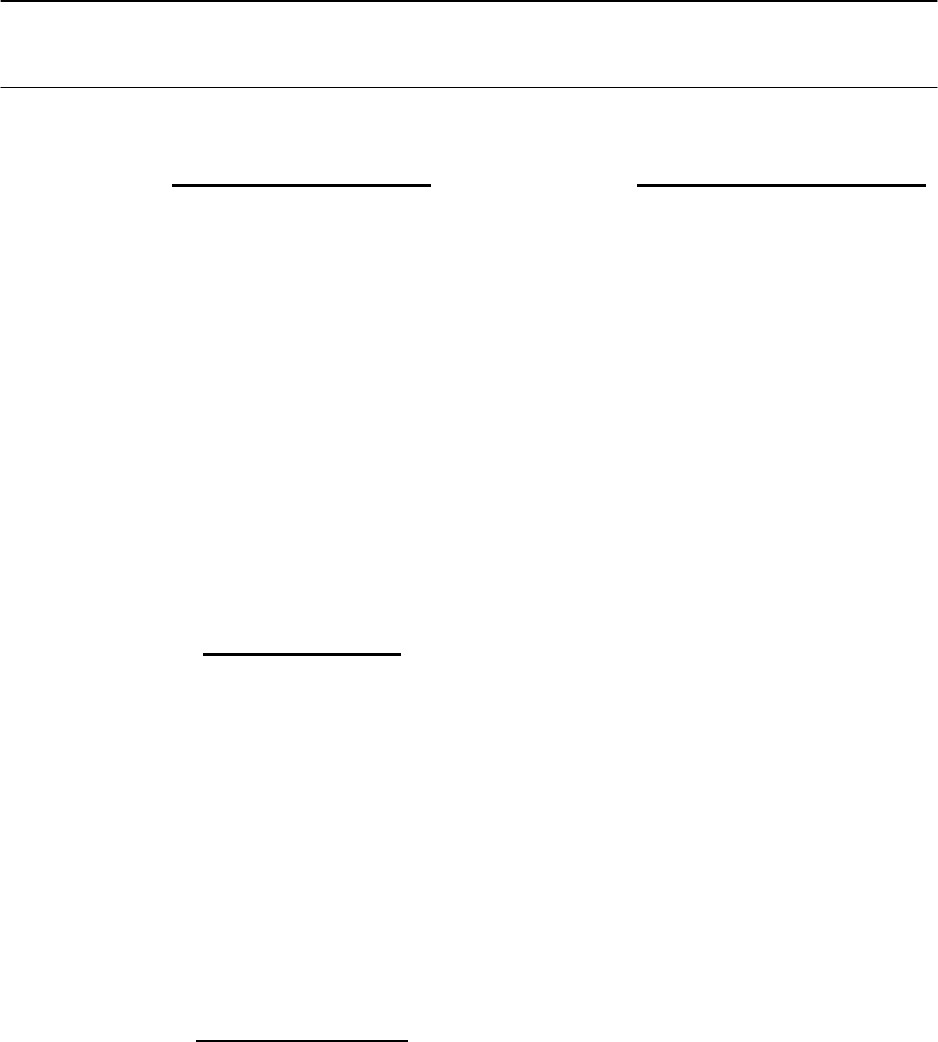
GAO-01-1008G – Internal Control Management and Evaluation Tool (8/01)Page 69
OVERALL INTERNAL CONTROL SUMMARY
Control Environment
Assessment/Conclusions
Management and employees have a positive and
supportive attitude toward internal control and
conscientious management. Management conveys the
message that integrity and ethical values must not be
compromised. The agency demonstrates a commitment to
the competence of its personnel and employs good human
capital policies and practices. Management has a
philosophy and operating style that is appropriate to the
development and maintenance of effective internal control.
The agency’s organizational structure and the way in
which it assigns authority and responsibility contribute to
effective internal control. The agency has a good working
relationship with Congress and oversight groups.
Risk Assessment
The agency has established clear and consistent entitywide
objectives and supporting activity-level objectives.
Management has made a thorough identification of risks,
from both internal and external sources, that may affect
the ability of the agency to meet those objectives. An
analysis of those risks has been performed, and the agency
has developed an appropriate approach for risk
management. In addition, mechanisms are in place to
identify changes that may affect the agency’s ability to
achieve its missions, goals, and objectives.
Control Activities
Appropriate policies, procedures, techniques, and control
mechanisms have been developed and are in place to
ensure adherence to established directives. Proper control
activities have been developed for each of the agency’s
activities. The control activities identified as necessary are
actually being applied properly.

GAO-01-1008G – Internal Control Management and Evaluation Tool (8/01)Page 70
Information and Communications Assessment/Conclusions
Information systems are in place to identify and record
pertinent operational and financial information relating to
internal and external events. That information is
communicated to management and others within the
agency who need it and in a form that enables them to
carry out their duties and responsibilities efficiently and
effectively. Management ensures that effective internal
communications take place. It also ensures that effective
external communications occur with groups that can
affect the achievement of the agency’s missions, goals, and
objectives. The agency employs various forms of
communications appropriate to its needs and manages,
develops, and revises its information systems in a
continual effort to improve communications.
Monitoring
Agency internal control monitoring assesses the quality of
performance over time. It does this by putting procedures
in place to monitor internal control on an ongoing basis as
a part of the process of carrying out its regular activities.
It includes ensuring that managers know their
responsibilities for internal control and control
monitoring. In addition, separate evaluations of internal
control are periodically performed and the deficiencies
found are investigated. Procedures are in place to ensure
that the findings of all audits and other reviews are
promptly evaluated, decisions are made about the
appropriate response, and actions are taken to correct or
otherwise resolve the issues promptly.
(193010)

GAO-01-1008G – Internal Control Management and Evaluation Tool (8/01)Page 71
RELATED PRODUCTS
These related products address three main categories: internal control, financial management systems, and
financial reporting (accounting standards). We have developed these guidelines and tools to assist
agencies in improving or maintaining effective operations and financial management.
Internal Control
Standards for Internal Control Streamlining the Payment Process
in the Federal Government, While Maintaining Effective Internal
GAO/AIMD-00-21.3.1, November 1999. Control, GAO/AIMD-00-21.3.2,
May 2000.
Determining Performance and
Accountability Challenges and High
Risks, GAO-01-159SP, November 2000.
Financial Management Systems
Framework for Federal Financial Inventory System Checklist,
Management System Checklist, GAO/AIMD-98-21.2.4, May 1998.
GAO/AIMD-98-21.2.1, May 1998.
System Requirements for Managerial Core Financial System Requirements
Cost Accounting Checklist, Checklist, GAO/AIMD-00-21.2.2,
GAO/AIMD-99-21.2.9, January 1999. February 2000.
Human Resources and Payroll Direct Loan System Requirements
Systems Requirements Checklist Checklist, GAO/AIMD-00-21.2.6,
GAO/AIMD-00-21.2.3, March 2000. April 2000.
Travel System Requirements Seized Property and Forfeited Assets
Checklist, GAO/AIMD-00-21.2.8, Requirements Checklist,
May 2000. GAO-01-99G, October 2000.
Guaranteed Loan System
Requirements Checklist,
GAO-01-371G, March 2001
Financial Reporting (Accounting Standards)
“Checklist for Reports Prepared Under the CFO Act,” (Section 1004 of the
GAO/PCIE Financial Audit Manual (FAM), July 2001). This is a checklist
containing agency financial statement reporting requirements.
These documents are available on the Internet on GAO’s home page (www.gao.gov) under the heading
“Other Publications” and the subheading “Accounting and Financial Management.” They can also be
obtained from GAO, 700 4
th
Street NW, Room 1100, Washington DC 20548, or by calling
(202) 512-6000 or TDD (202) 512-2537.
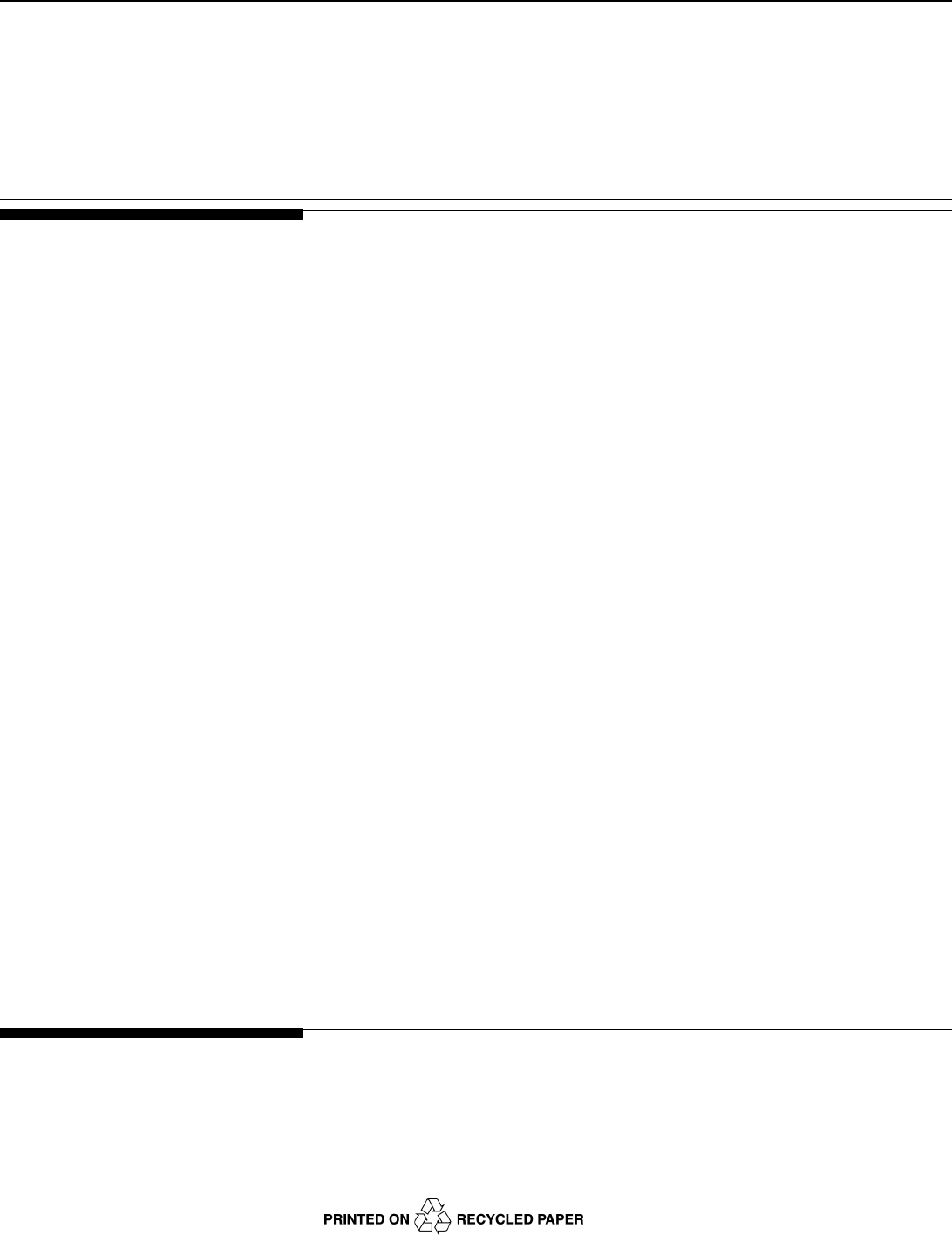
Ordering Information
The first copy of each GAO report is free. Additional copies of
reports are $2 each. A check or money order should be made out to
the Superintendent of Documents. VISA and MasterCard credit
cards are accepted, also.
Orders for 100 or more copies to be mailed to a single address are
discounted 25 percent.
Orders by mail:
U.S. General Accounting Office
P.O. Box 37050
Washington, DC 20013
Orders by visiting:
Room 1100
700 4th St. NW (corner of 4th and G Sts. NW)
U.S. General Accounting Office
Washington, DC
Orders by phone:
(202) 512-6000
fax: (202) 512-6061
TDD (202) 512-2537
Each day, GAO issues a list of newly available reports and
testimony. To receive facsimile copies of the daily list or any list
from the past 30 days, please call (202) 512-6000 using a touchtone
phone. A recorded menu will provide information on how to obtain
these lists.
Orders by Internet:
For information on how to access GAO reports on the Internet,
send an e-mail message with “info” in the body to:
info@www.gao.gov
or visit GAO’s World Wide Web home page at:
http://www.gao.gov
To Report Fraud,
Waste, or Abuse in
Federal Programs
Contact one:
• Web site: http://www.gao.gov/fraudnet/fraudnet.htm
• e-mail: [email protected]
• 1-800-424-5454 (automated answering system)
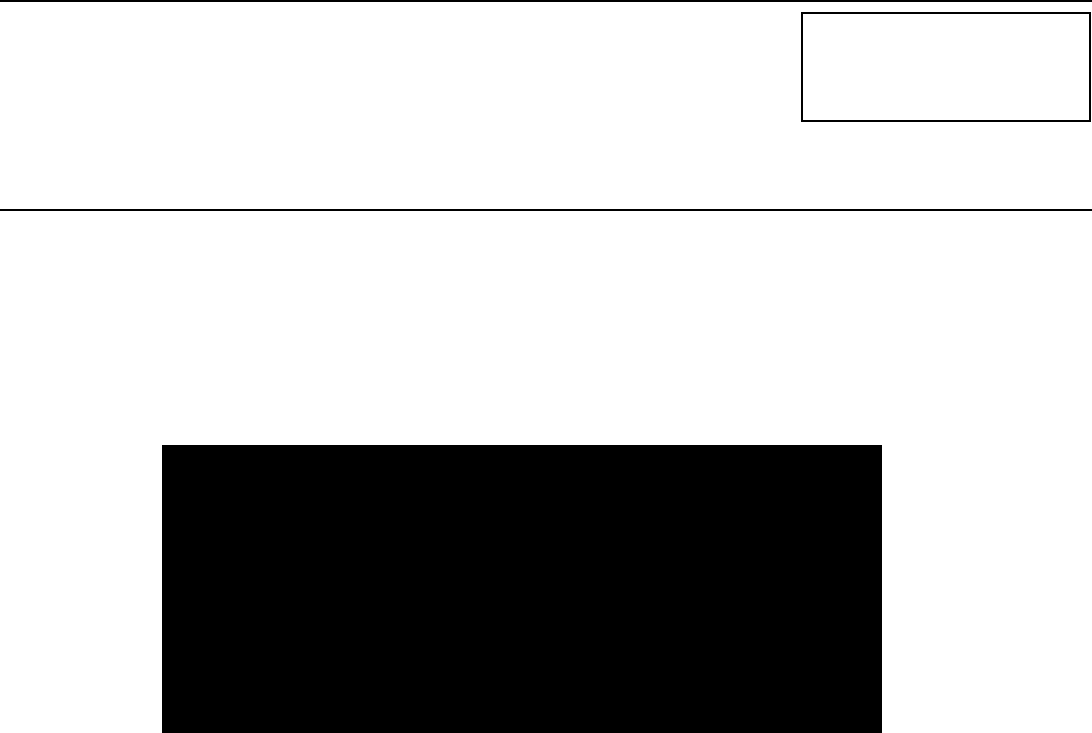
United States
General Accounting Office
Washington, D.C. 20548-0001
Official Business
Penalty for Private Use $300
Address Correction Requested
Presorted Standard
Postage & Fees Paid
GAO
Permit No. GI00
